Fred & Hyon's
Netherlands Adventure
Cont'd
Click for
more recent installments of euroblog.
To
1st
installment of euroblog
February 2, 2005
 |
Maastricht to Maasai Mara, or, Tanned in Tanzania
Safari, in Swahili, means ‘journey.’ At the end of January we
journeyed to Tanzania. MsM
partners with ESAMI, the Eastern and Southern Africa Management
Institute, to offer MBAs in the region. I came to act as examiner on
master’s theses, and to preside over a graduation of 230 students from
all countries in E & S Africa (except South Africa).
ESAMI is in Arusha, in the north central highlands on the slopes of Mt.
Kilimanjaro. Arusha’s 400,000 residents makes it Tanzania’s 3rd
largest city! The country’s economy is shockingly small and
anachronistic. There is one phone directory for the whole
country;
it's the size of a small-town directory in the U.S. Thirty-five
million
people,
dam’ few phones.
So we get here late on a Sunday night. I go directly to work the
next
morning and hardly get outside the examination room for the next four
days. Luckily it has a pleasant cross-breeze and a great view of
Mt.
Meru.
Meanwhile, Hyon gets intrepid, trotting off to find Africa. The
first
day, she made her way to a village partway up Mt. Meru and hung with
the Maasai for the day. This was brave not only because of the
strangeness of the country, but at five foot one, Hyon has really felt
the fact that the Dutch are the second tallest people on Earth.
Who’s
the tallest? That’s right – the Maasai. Later, she
organized our
safari to Ngorongoro Crater National Park, negotiating a day trip for
the two of us for $250 U.S. including lunch and admission to the park,
which is a 3-hour drive from Arusha. Good job, Hyon! The trip would
have been a bargain at double the price (and several other operators
were eager to offer it at double the price).
I heard interesting Master’s presentations from Tanzanian, Ugandan,
Kenyan and Malawian students, most of whom already have high positions
in government ministries, parastatals, and NGOs. Remember Coming to America,
where Eddie Murphy plays an African king who looks for true love in
Brooklyn, hiding his identity and getting a job at a burger
joint? One
of his expat subjects recognizes him and grovels on the floor while
Murphy urgently whispers, “Get up, don’t do that.” Well, at ESAMI, a
former commanding general of the Ugandan Army enrolled as a
student. A
humble guy, he didn’t put his full history on his application, and
nobody knew who he was until some other Ugandan students recognized him
and started saluting him.
Julius Nyerere unified 125 tribes into the Tanzanian Republic by
encouraging the use of Swahili. (This worked for everyone except
the
Maasai, who still speak only Maasai.) At ESAMI, any display
of
tribalism is discouraged; they are Tanzanians and Pan-Africans.
This
didn’t prevent families at the commencement from breaking into ethnic
song and dance when their graduates were handed their diplomas!
|
Arusha
We give Arusha top raves as a vacation spot. Pack your sunscreen,
malaria pills and DEET - and go! A profusion of birds,
butterflies, flowers, rainbows, a sensual feast. (That’s even
before you get to the many national parks nearby.) Brightly
colored clothing on really lovely people.
A daily jumbo jet from Amsterdam serves Kilimanjaro airport, and KLM
throws in the 40-minute shuttle ride into Arusha. To be sure,
half the people stay on the jet for the last leg into Dar es Salaam,
but that’s still a lot of tourists into Arusha. You can stay in Arusha
and make day trips, or stay one night there before leaving on multi-day
safaris. We enjoyed the Impala Hotel and its nearby restaurants, but
there are ample 5-star places if you’re more inclined to luxury.
Or you can stay on a coffee plantation. Or at the Mt. Meru
Wildlife Sanctuary and Lodge, which is totally Isak Dinesen.
Mild weather year round (tho it’s equatorial, it’s high-altitude),
scenery that can’t be beat, hot milk served with your coffee and tea,
reserved but friendly people, good cheap food, fantastic ebony carvings
and Maasai blankets to take home, lions tigers and bears, what more
could you ask? OK, I’m lying about the tigers and bears, but read
on….
Ngorongoro
If our driver Isack hadn’t been such a speed demon, I’d be inflicting
even more roadside snapshots on you. We were lucky in many ways:
it was just before rainy season, not high tourist season, a bit less
rain than the usual January (global warming?), and more lions and
rhinos than ordinarily make themselves evident.
The photos below can’t convey the sounds of Ngorongoro: an elephant
ripping huge bunches of vegetation from the earth and stuffing them
into his mouth; birdsong; cowbells on Maasai cattle (the name
Ngorongoro comes from the sound the Maasai think the bells make);
hoofbeats of zebra and wildebeest, thousands of flamingos taking off at
once (“flutter” is too wimpy a word for it).
We saw lions, hyenas, baboons, vervet monkeys, wildebeest, cape
buffalo, Thompson’s gazelles, Grant’s gazelles, zebra, giraffe,
elephant, jackal, warthog, hippopotamus, black rhinoceros, eland, black
mamba. Now, you can see these animals together at the Africa park
in Waco, Texas, but they’re much more interesting in a natural
ecosystem. All those species have inhabited the 20-km.-diameter
Ngorongoro caldera since it cooled down enough for grass to grow, 1.2
million years ago. The Maasai can graze cattle there and safari
vehicles are allowed on specified tracks, but that’s it for human
intervention.
Many species of storks (if their numbers are any indicator, look for a
baby boom soon in your town), black kite, vultures, crowned herons,
cattle egrets (o’course), ibis, white and pink flamingo, ostrich,
something that looked like a kingfisher but 10 times bigger than any
kingfisher I’ve ever seen, and many smaller colorful birds. Plus
multi-story ant condominiums.
All peaceful during our visit except for some dominance contests
between wildebeest, and one attack on a tourist by a monkey who had
entered her Land Cruiser looking for food. Tourist escaped with a
scratched ankle.
Isack was knowledgeable about the local zoology and
anthropology.
His email is IsackMsuya@yahoo.com.
|
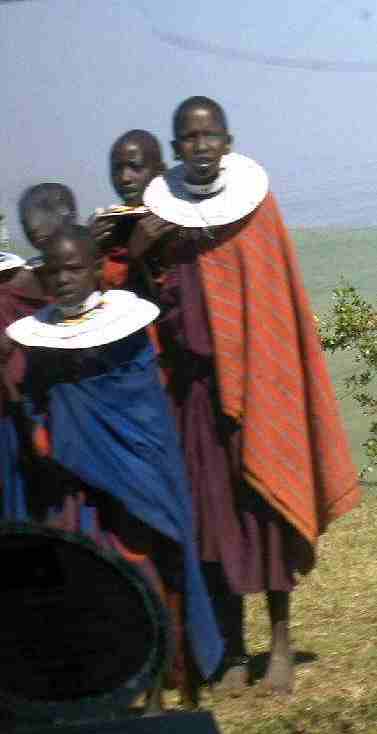
|
Arusha National Park
A different terrain from Ngorongoro, closer to Arusha, no lions but
lots more giraffes. Plus we saw (on the mammal side) bushbuck,
colobus monkey, red duiker, waterbuck, blue monkey, banded
mongoose. And of the avian persuasion, superb starling (a species
name but also an appropriate adjective), trumpet hornbill, tawny eagle,
fish eagle, more flamingos.
On the road
- The Maasai we met were gracious. If locals see them as
haughty, though, it’s understandable. From the Maasai perspective
(I have no informants on this matter, I’m just projecting), they still
live in Eden while the rest of us poor schmucks struggle in less
congenial environments. They have their perfect climate and soil,
their spectacular scenery, the cattle that represent wealth in their
culture, the fun of stealing even more cattle (sort of like the Dutch
and their national sport of bicycle theft), and their strikingly
beautiful vermilion-dyed blankets and clothing. I asked what
plant that dye comes from, and was told the Maasai buy the blankets in
the city! So I still don’t know about the dye. I did learn
the Maasai like the red because they think it warns lions of their
presence, thus avoiding unpleasant misunderstandings. Some Maasai
do live hard lives, especially those in nearby desert environments, but
they don’t want to change. Will they change? Seeing
foreigners’ interest in the culture, the Tanzanian government is taking
measures to preserve the Maasai way of life. The countervailing
force is the missionaries, who never stop trying. According to
Willy (our other driver), missionaries virtually kidnap Maasai girls
into Christian schools.
- As bad as that sounds, there’s something we have to appreciate in
this present age when we value “social capital” as a source of
innovation and economic development. Having traveled in Tanzania
for one week, South Korea for 30 years, and other countries for
middling periods, I have seen that the Protestant and Catholic churches
provided social networking in times when no other organizations existed
to do so. Despite abuses that can’t be ignored, this activity
laid the groundwork for other agencies to effect further advances in
local economies.
- The Olduvai Gorge is hard by Ngorongoro, and there’s still
heavy-duty paleontology going on.
- Kilimanjaro came out of the clouds just one day. We didn’t
mind, because it looks just like Mt. St. Helens anyway. The many
secondary volcanic cones around the whole region look like those you
see from I-5 near Eugene, Oregon.
- The average cash income here is $30/month. Most people also
grow food, raise chickens, and have enough to eat. It has been
centuries since it was worthwhile in advanced countries for a teenager
or adult to spend a day carrying water up a hill, but here it is still
common. In a tourism economy, there’s no question that locals see
you as a walking wallet. However, the friendliness seems genuine
(as longtimers here confirm); there’s none of the thinly veiled
hostility that one notices, for example, on some Caribbean
islands. And though there’s the occasional mugging, the streets
are probably safer than in Las Vegas, Baltimore or Honolulu. The
gap between rich and poor here is vast, and by Western standards, crime
would pay. In my estimation, the only things keeping the
Tanzanian system stable are that the poor have not had the opportunity
to learn to want more things, there's still the afterglow of having got
rid of the colonial British, and urban populations are still small.
- Other useful Swahili phrases:
o Jambo: Howdy [You also hear a lot of
“Salaam aleikum.”]
o Asanti sana: Thank you
o Karibu: Welcome; you’re welcome; go ahead
Maastricht miscellany
All this travel is wonderful, it's what we wanted, but I can foresee
the day when I'll want to go back to Texas and, as the old folkie put
it, "nail my shoes to the kitchen floor, lace 'em up and bar the
door." Meanwhile we'll enjoy Europe and travels
beyond, and visits from our U.S. family and friends. Thanks,
Samia, for spending the weekend with us last month!
In the spirit of soaking up Dutch culture, we sat in a local
cannabistro for a half hour, drinking coffee and watching other people
puff. Second-hand smoke? We didn't inhale. Not once
in the whole half hour, no sir.
We pay the kids' college expenses in dollars. Every time the
dollar loses ground against the Euro, we feel like I'm getting a raise
in salary. On one occasion, though, we felt poorer. In
September we ordered a new Toyota Prius from Maastricht's dealer and
were put on a 4-month waiting list. In December he called and
said, "Good news, surprise, your car will be here in ten days."
"That's not
good news," we replied. "Why not?" "We haven't yet earned enough
Euros to pay for it," we explained, "and the Euro has appreciated from
$1.20 to $1.35 since we ordered the car. If we have to convert
dollars to pay for the car, it will cost 20% more than we expected,
after exchange fees." Thus did we cancel the contract and buy a
used Camry from the same dealer. A beautiful car, we're satisfied
with it, and had it in time to travel with our kids during their
semester break visit.
Feel free to share this blog's URL with anyone who might be
interested. Ditto for the site for my last book
The Conscious Manager,
http://www.generalinformatics.com/CM/cm.html;
my pages for corporate site selection managers and economic development
officials
http://www.generalinformatics.com/technopolistimes.html;
and my company's home page (soon due for major repositioning),
www.generalinformatics.com.
Those interested in MBA and doctoral studies in management should look
at
http://www.msm.nl.
Photo section
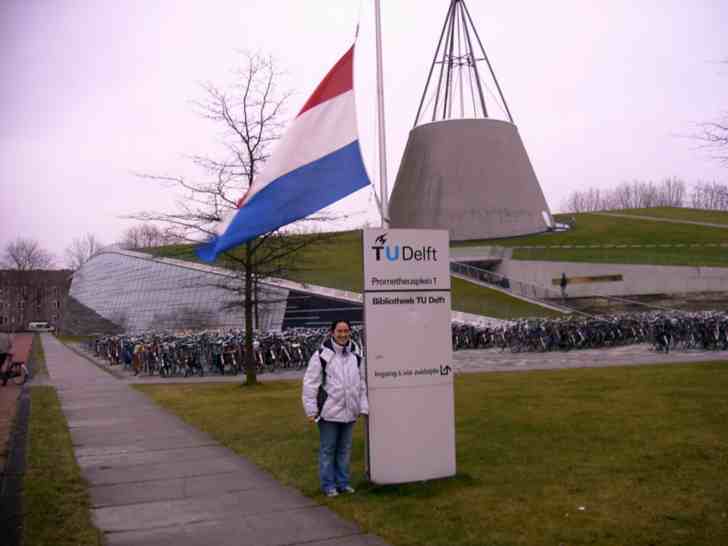
|
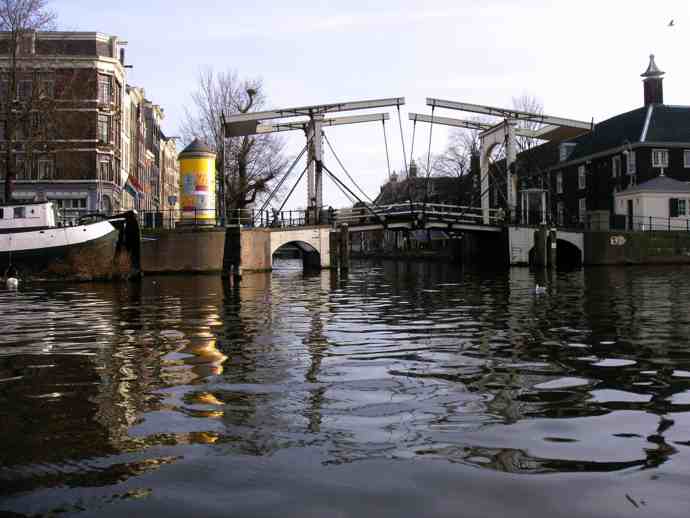
|
Anna in front of the library at MsM's
ancestor institution, the Technical University of Delft. The
library is an architectural marvel.
|
Water-level
view from one of Amsterdam's canals.
|
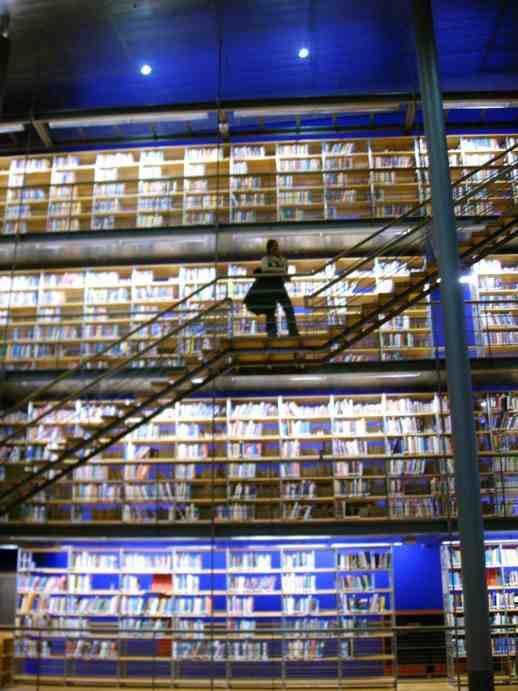 |
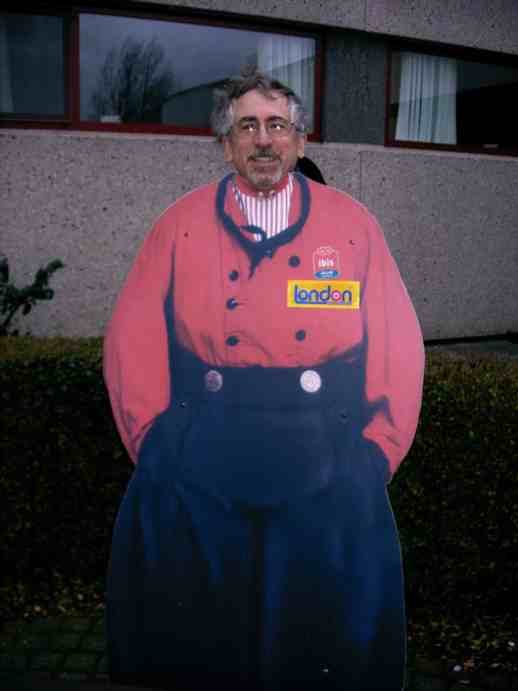
|
Gina
inside TU-Delft's library.
|
Dutch
boy Fred the day before he got a haircut.
|
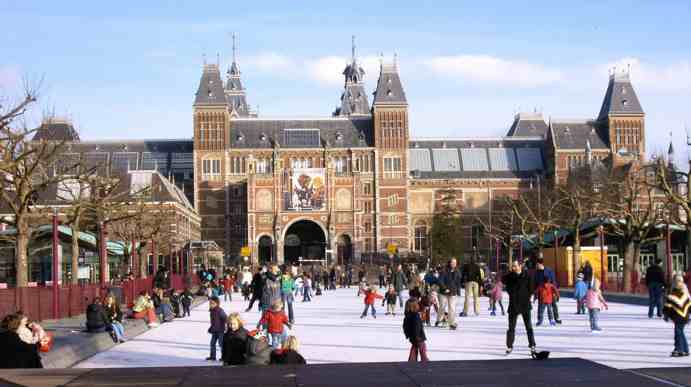
Above: Skating at the
Rijksmuseum.
Right: Another
canal-level view of Amsterdam.
Below: With two faculty
colleagues at the ESAMI commencement. I
took off my black academic robes immediately after the ceremony.
Not only did they look dull compared to my counterparts', but I had
learned that locally, men dressed in black are candidates for
circumcision. The faculty allowed that I was unlikely to be
mistaken for a Maasai teenager, but still wise to forestall any
dangerous confusion.
Yes, the professor in the background is as Jamaican as he appears to
be, but he has lived in Africa for decades.
Below right: Hyon and me
at Arusha National Park with Land Cruiser and
Mt. Meru in background.
|
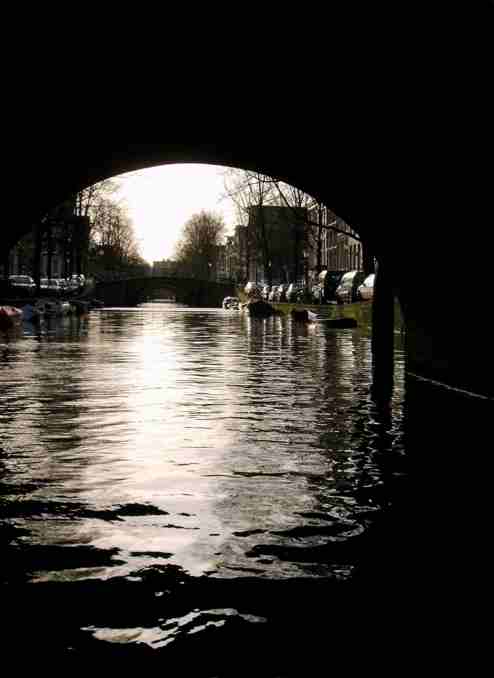
|
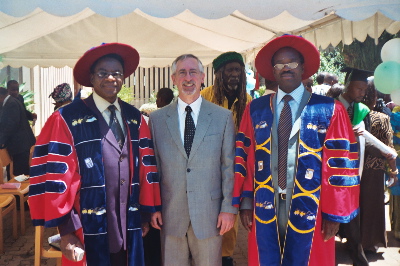
|
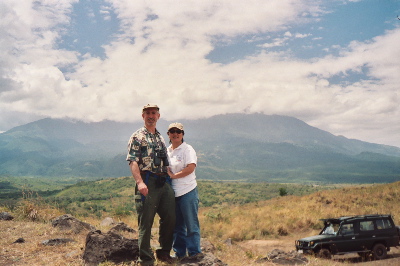
|
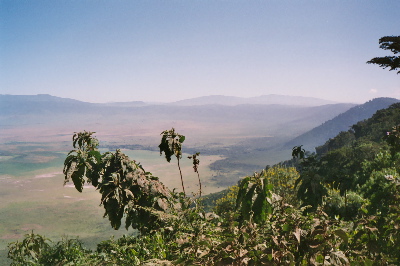
Ngorongoro Crater
|
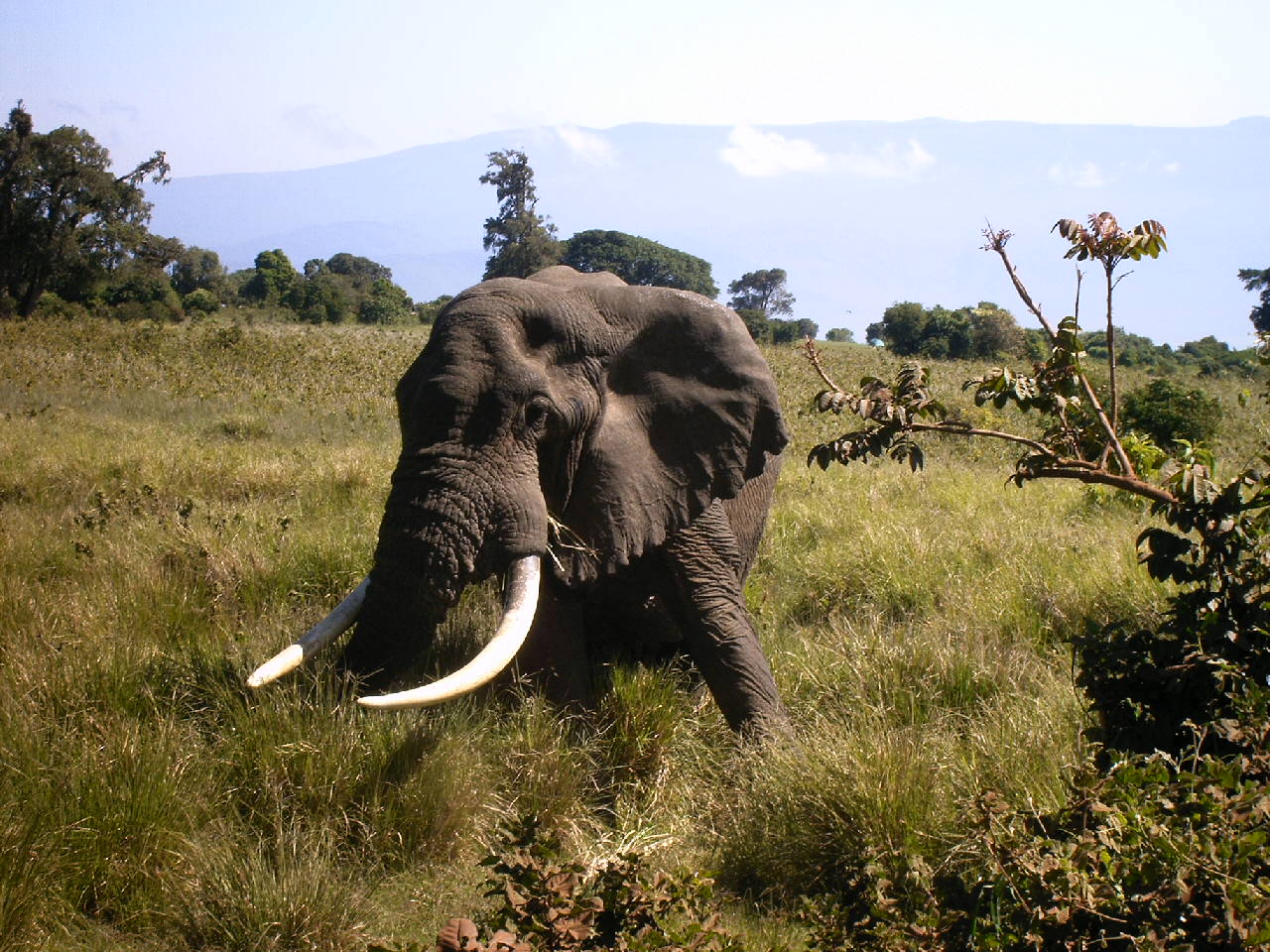
|
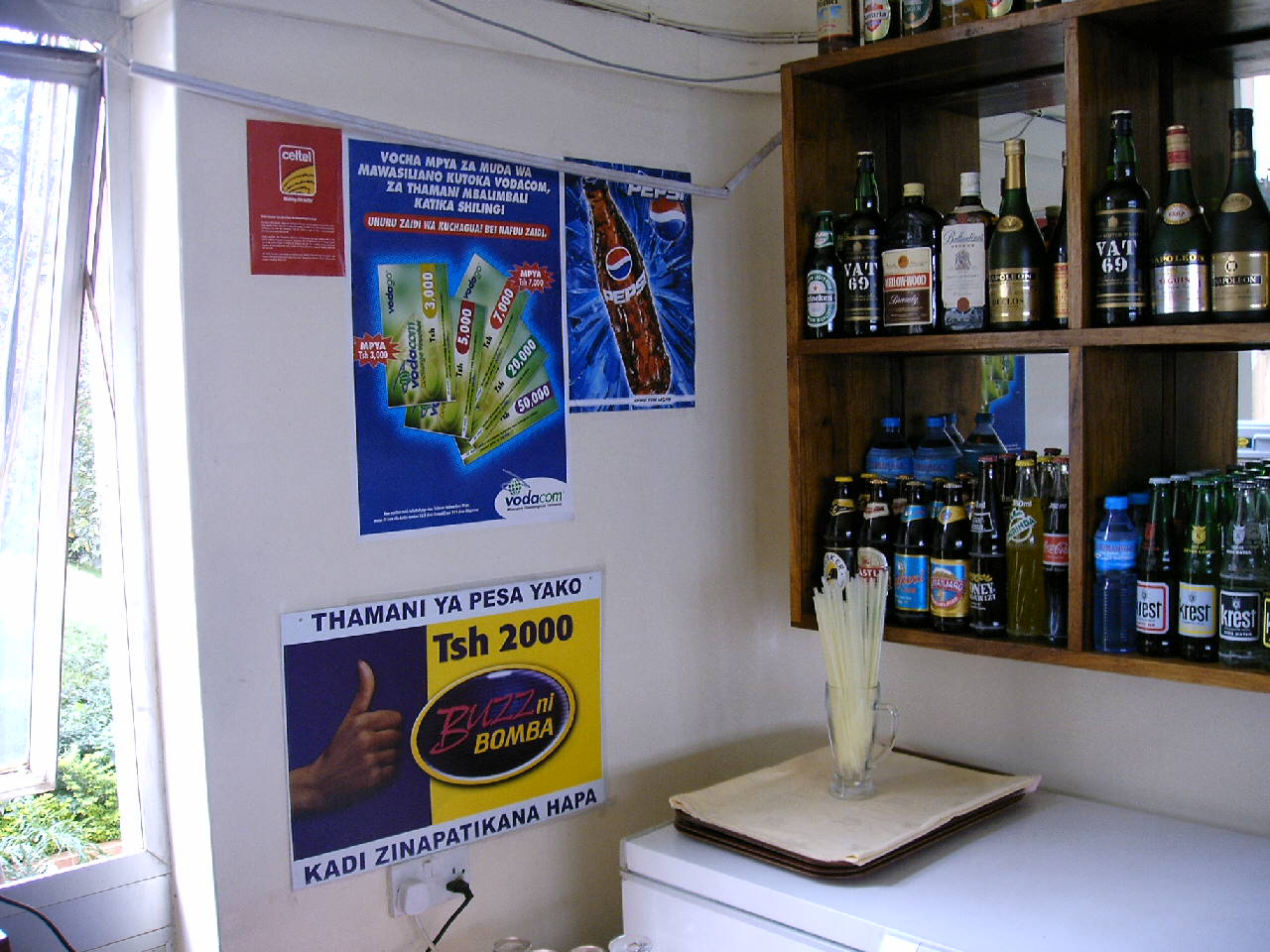
The bar at ESAMI.
Note the poster in Swahili. I hadn't known Swahili is written
using Roman letters.
|

|
 |
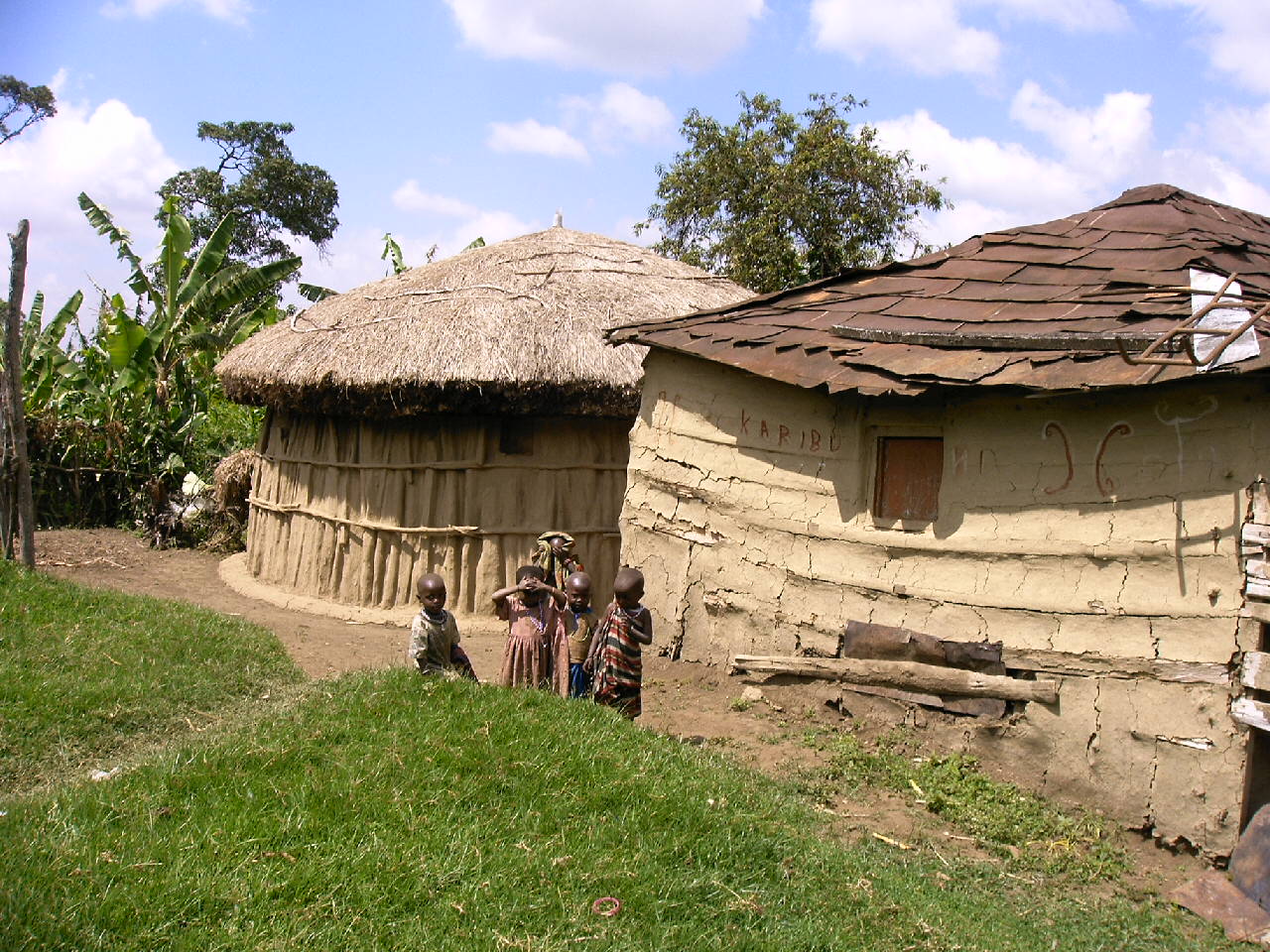
|
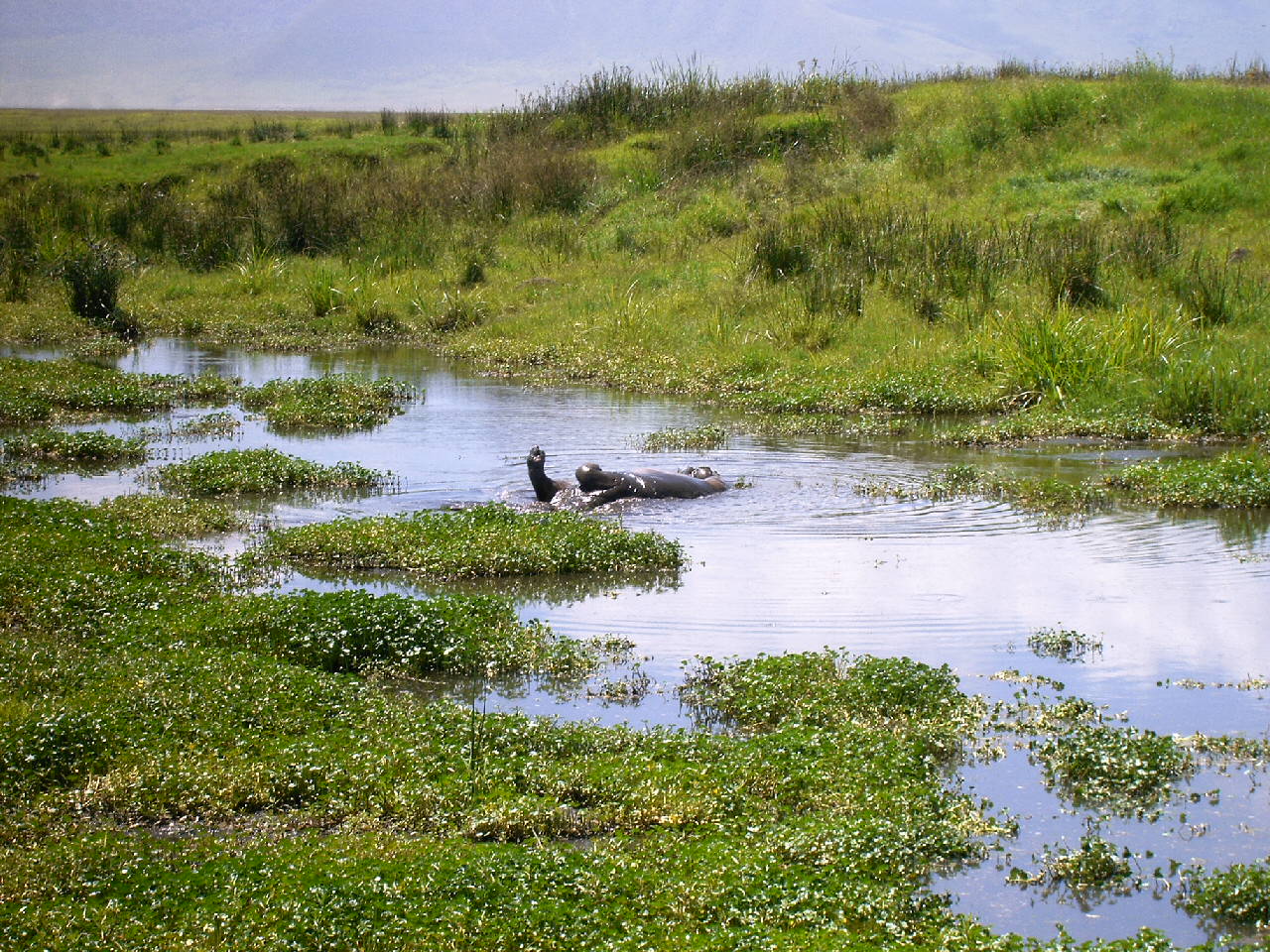
|
Hyon's
pic from the W'arusha boma
she visited.
|
This hippo does the backstroke.
|
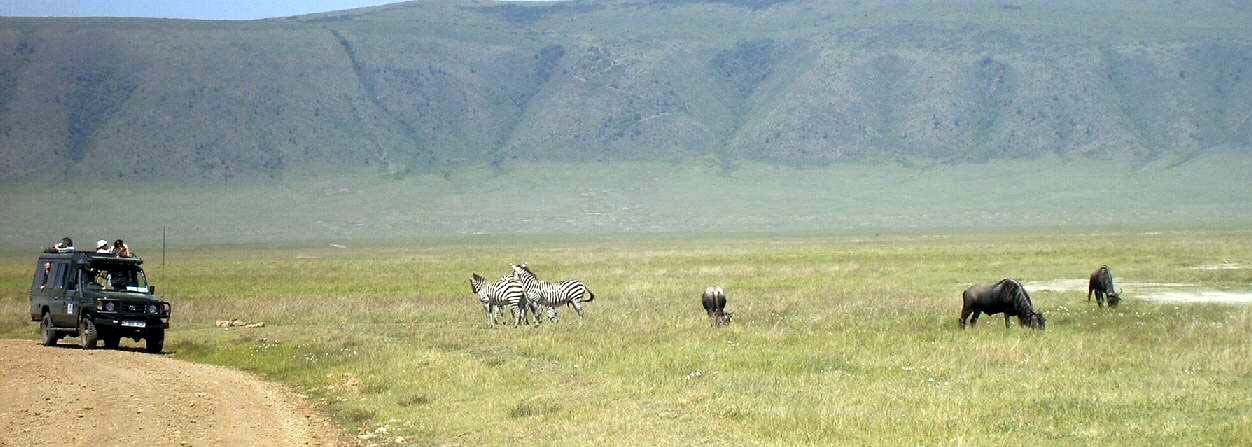
|
January 4, 2005
In November, the night before I left for Egypt, Hyon and I went to a
Flamenco concert. I do love Flamenco, to my mind one of the grand
ultimates of music. (The evident impossibility of gaining
competence in it was one reason I gave up guitar many years ago.) One
hears intervals in Flamenco that are not heard in any other European
music. The sounds of Cairo then reinforced for me that Flamenco is a
mix of European and Arabic scales.
What must life have been like in Spain before 1498? OK, that's an
abrupt transition, but the Flamenco got me thinking about golden ages
of constructive culture clash such as the Arabs, Catholic Spaniards and
Jews enjoyed prior to the expulsion. Must have been a wonderful
time. Cultural interfaces have been the key to creative cities in
every historical instance, and it's highly relevant as we wonder what
essential ingredients of future vitality Portland and Austin have and
don't have. (I have finally started to read a book that's been
unopened on my shelf
for years, and it's FANTASTIC. Cities
and Civilization by Sir Peter Hall. Many of the clues are
there.)
In any case, oddly as it's absent from most European-derived music, you
can hear the Arab influence in Cuban music, viz., the Buena Vista
Social Club. Well, maybe not so oddly, because if you were kicked
out of Spain during the Age of Discovery, you could as well have ended
up in Cuba, Brazil, Mexico, or the Canary Islands as in Germany or
Poland.
CNN recently ran a feature on the growing prevalence of evangelical
religion in America, and its "America as Christian nation"
theme. Put it together with Asians' and Middle-easterners'
new difficulties in getting a visa to visit the U.S., and we have to
wonder: Will America go the way of 16th-century Spain? The inquisition
and expulsion were the triumphs of the "Spain-for-Catholics-only"
faction in Spanish society. Afterward, Spain over-extended
itself, suffered military reversals, torpedoed the monetary economy of
Europe by importing too much gold, lost its cultural vitality, and no
one ever heard of Spain again until the 20th century.
"In a related story," as they say, CNN says Islamic art is breaking
records at auctions. Even if that's driven by stuff looted from Iraqi
museums, it's still indicative of a backlash against Bush's attempt to
marginalize Islamic culture.
I have to add that it wasn't just the Catholics that suffered cultural
stagnation after the expulsion; aside from music and a few great
novels, not much has happened in Islamic culture for the last 500
years. So it's marginalized already. My point is, should we build
cultural interfaces with Arabs (like the Anglo-Chicano mix in Austin)
that create new art forms and new markets, or should we go to war
against Iraq? Which do you think is better for the economy and a
lot more fun too?
Despite what you suspect, I am not being facile when I say "build
cultural interfaces." An example: Former Austin Mayor Gus
García once made a remark about Jews and got
misinterpreted. Instead of circling the wagons, he simply said,
"I didn't mean it that way, but just in case I hurt anyone's feelings,
here's what we'll do for this city's Hispanic-Jewish relations."
He organized the first "Pachanga-Freilach," a party which was so
successful it's become an annual tradition. Rented ballroom,
mariachi band, klezmer orchestra, tamales, blintzes, folklorico dance,
and (the only real snooze of the evening) Israeli folk dancing.
No speeches. A
really good time, and I've come away from these parties with lasting
business contacts too.
Here are short notes on recent weekend jaunts (and our trips with the
kids while they've been here for the holidays) around this part of
Europe:
Dusseldorf. A pleasant town,
good shopping, including a Mitsukoshi depaato and at least two
Starbucks. A small but nice waterfront district (5 points if you
remembered it's on the Rhine) with some good restaurants.
Otherwise an unremarkable place, except that it is now a Japanese city,
with more than half of municipal tax receipts now collected from
Japanese businesses and families! Keep in mind that our
informant on that last point is a violin student, not an
economist.
Munich. For a city with a
dismal past (Ludwig's affair with Lola Montez; Hitler's beerhall
putsch; the Black September Olympic attack), Munich is a surprisingly
upbeat and prosperous place. I liked it better than I expected
to. At lunch, the next table was occupied by four slender women
of early middle age, an older version of the Sex in the City
quartet. But where Carrie and friends would have ordered salad
and Perrier, this foursome chowed down on bowls of sausages and giant
steins of beer. Aside from their weird meat fetish (mitigated by the
fact that government regulates sausage ingredients more tightly
in Germany than anywhere else), Muncheners are a lot of fun. And
I wasn't being shallow by lumping Ludwig and Lola together with the
other tragedies. Although their shenanigans did not have the global
repercussions of the others, they did rock Bavaria's society and
economy to the core.
Cologne. Largest
cathedral in Europe, and very, very high. We first approached it
on a foggy night. Well-lit at the bottom, invisible on top.
Ghostly and impressive. Unlike the food in Cologne, which did not
impress.
Tongeren. The oldest
town in Belgium, in a now-forgotten corner of the country just 20
minutes from Maastricht. Enormous outdoor antique market every
Sunday entertains and educates. This was the home of Ambiorix,
real-life precursor of the comic-book Gaulic warrior Asterix.
Bonnefanten Museum, Maastricht.
A lot of the old masters' paintings that we couldn't see at Amsterdam's
Rijksmuseum were right under our noses, on loan to the local museum in
Maastricht while the Rijksmuseum undergoes renovation. These
include a complete surplus of Madonna & Child paintings. Most
of these were painted by people who had never, evidently, seen a real
infant, and painted baby Jesus as something between a miniature adult
human and a monkey. I think this sends the wrong message to our
young people (yes, you detect Fred's usual tone of mild irony), that
you can get away without doing your research and still be considered a
great painter.
Trier. Now we're talking
really old stuff. The foundation of Trier's cathedral was laid in
363 a.d. - as a Christian church! - by a Roman empress. Nice
market square in Trier, half-timbered Shakespearean-looking structures
mixed with German gingerbread styles. Speaking of gingerbread,
nice bakeries in Trier.
Luxembourg. A refreshing
change. Most towns have their own character, but you see the
market square, you see the church, badabing, go home. The capital
city of the Grand Duchy of Luxembourg has dramatic topography, nice
buildings (like Brussels, it reminds
me a bit of Washington, D.C., but is classier than either),
nice parks, long and eventful history, elegant window shopping. It's a
bit too clean and spiffy - you'd almost think nobody really lives there
- but the Princess Diaries-type
fairy tale quality is engaging. The good news is the lowest
gasoline prices in Europe; the bad news is that it's still 85 eurocents
per liter. (Average is 1.05 euros/liter around Maastricht.)
Bruge. Just this once, I'm
gonna lay down the law. If you visit Europe, don't even think
about missing Bruge. Amazing and enchanting. On a bright, cold
December day there were enough tourists to make things lively, but not
enough to choke the lanes.
Ghent. Near-overwhelming dose
of medieval and later architecture. Well worth the trip if you're
going to Bruge anyway, though the buildings and canals don't harmonize
as well as in Bruge. Hospitable people, a corner of Europe where
they still thank Americans for our parents' World War II actions.
Photo section: Seen in and around Maastricht:
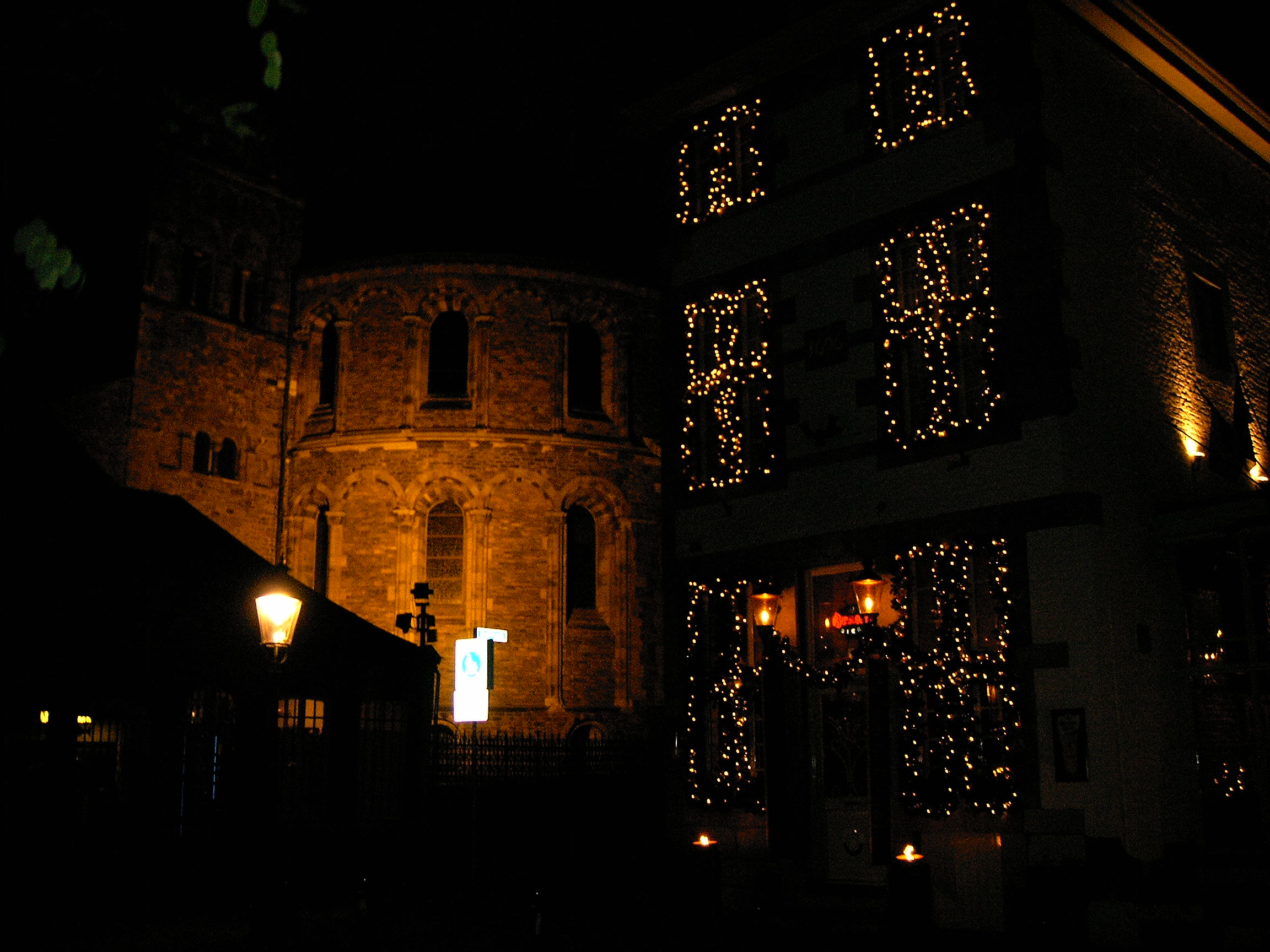
|
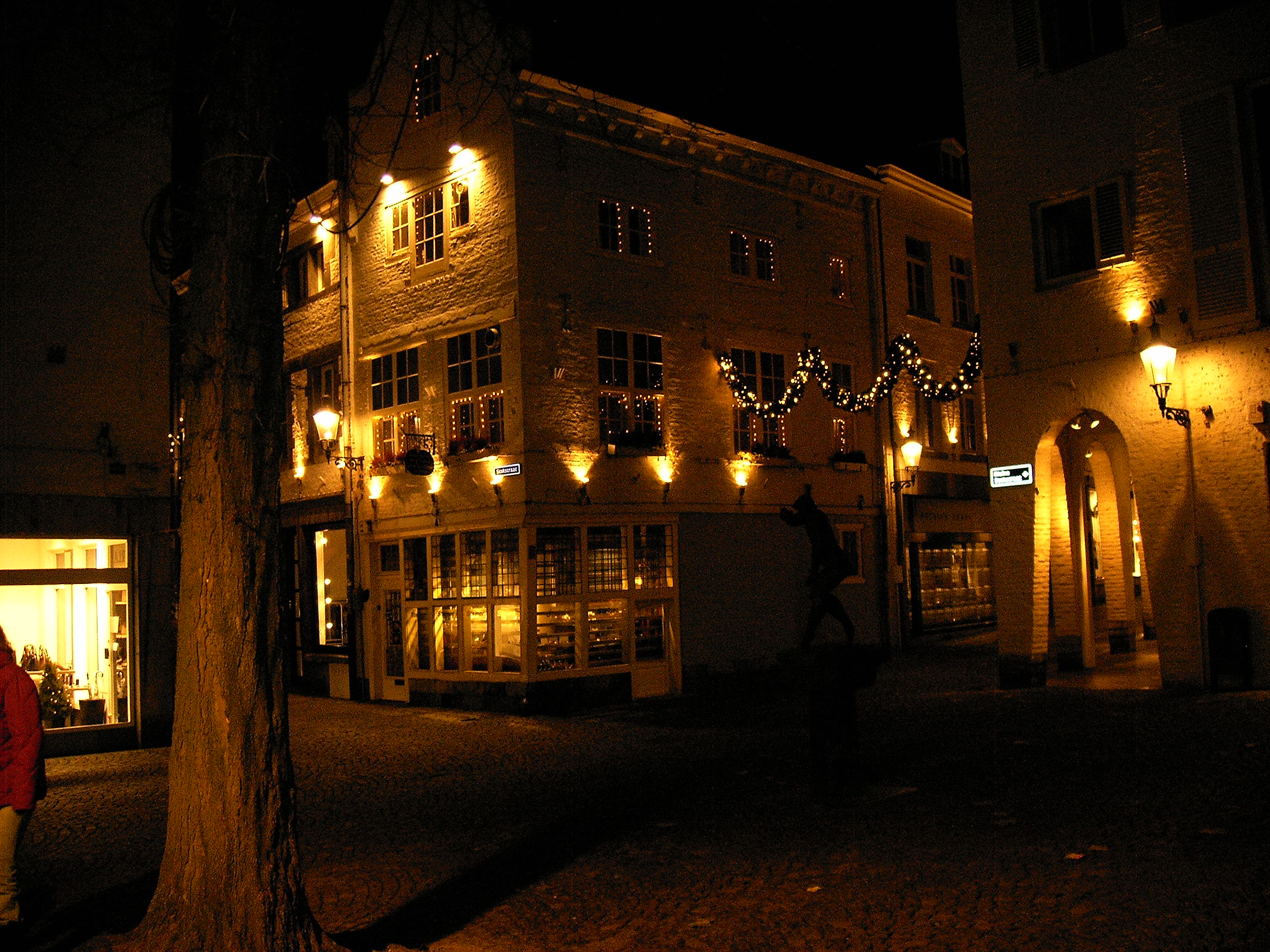
|
Onde
Lieve Vrouw Basiliek
|
Typical
example of Maastricht's old town squares
|
 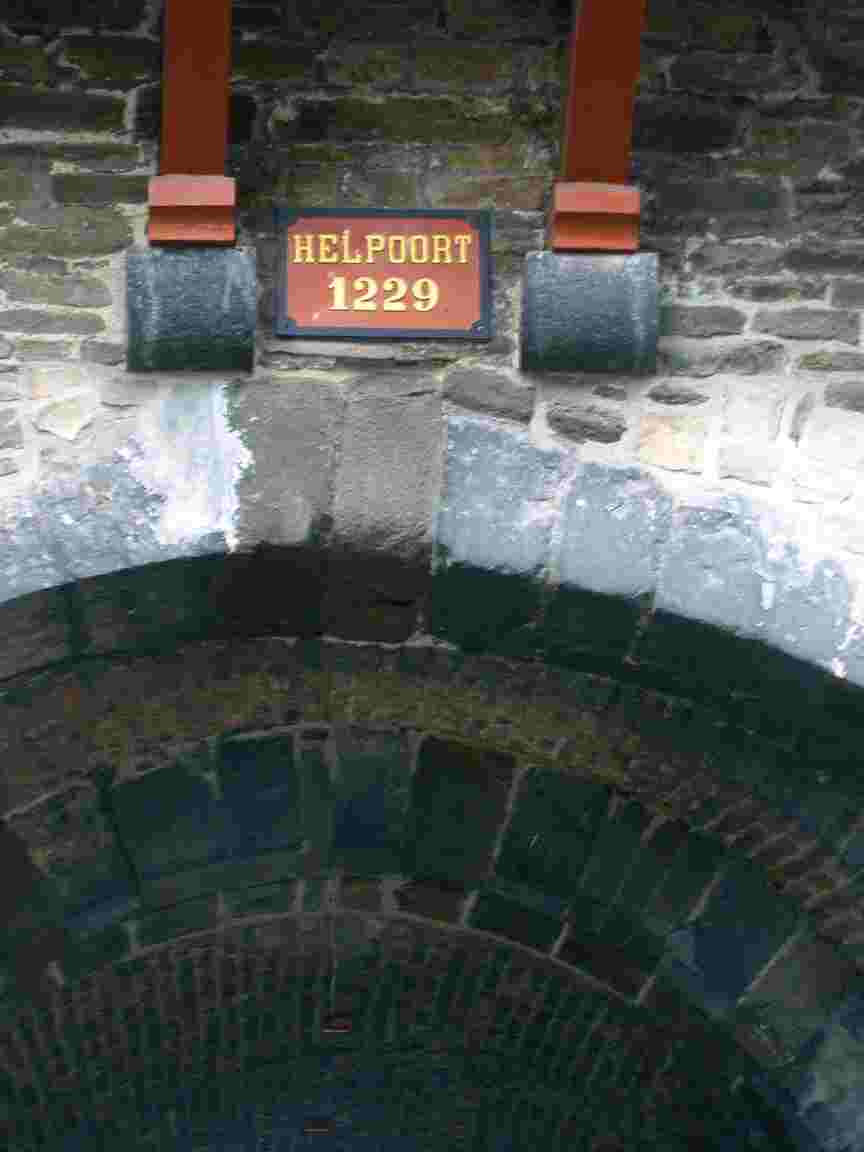
|
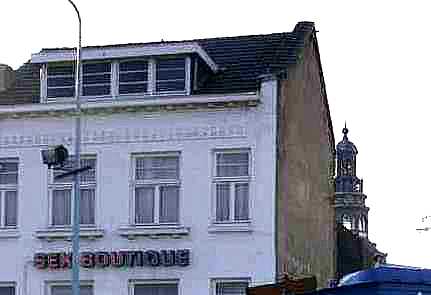
|
Does
Buffy know about these?
|
Classy,
huh?
|
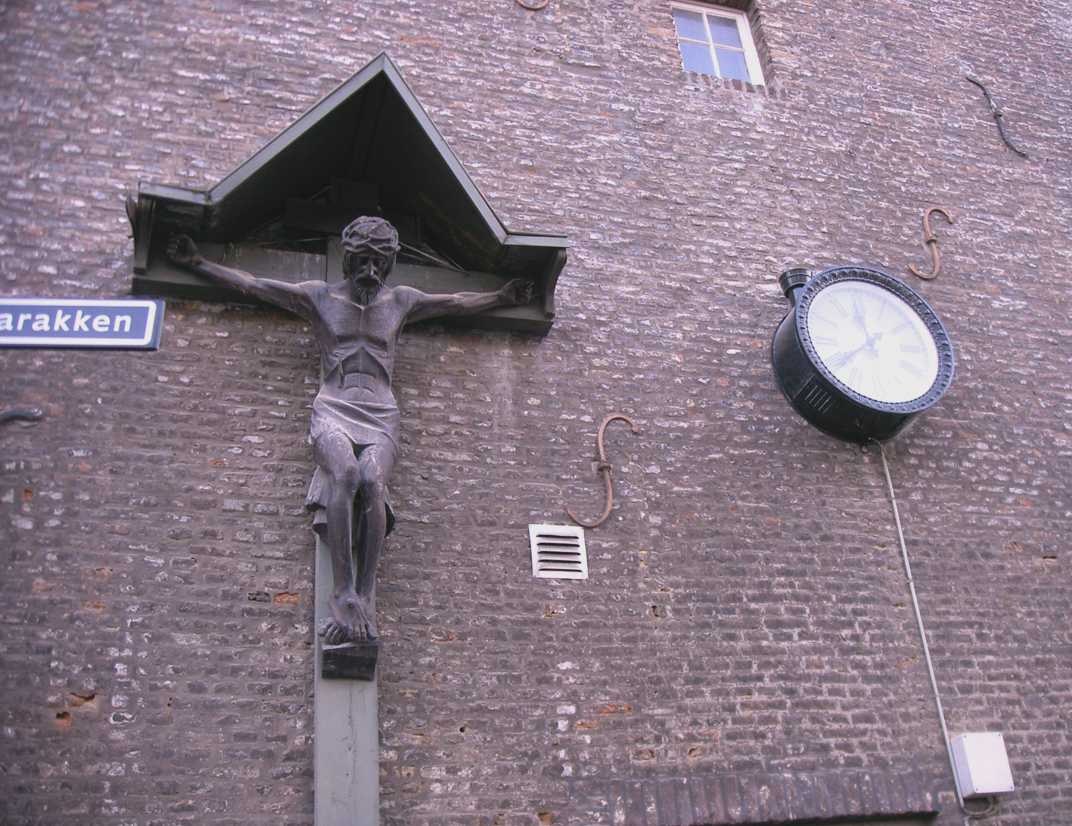
|
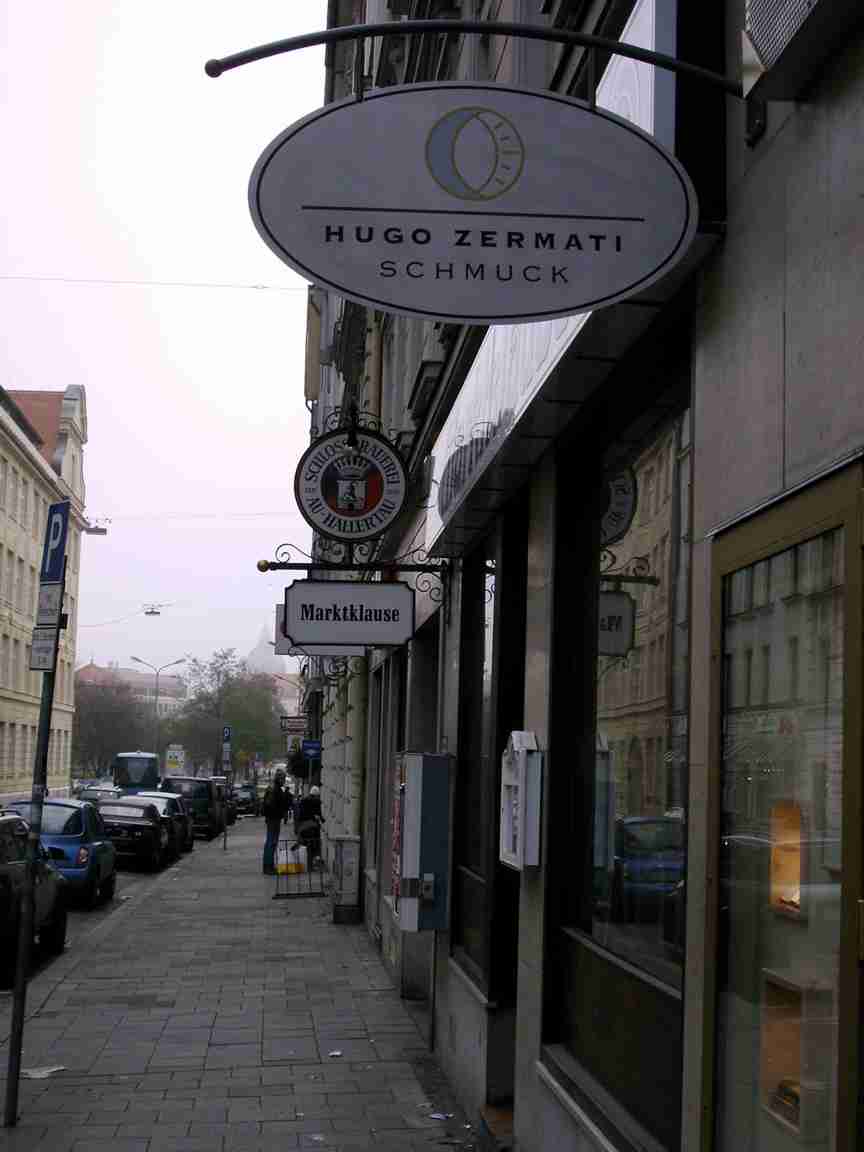
|
Is
it
time to get down yet?
|
Good
of Hugo to be so up-front about it.
|
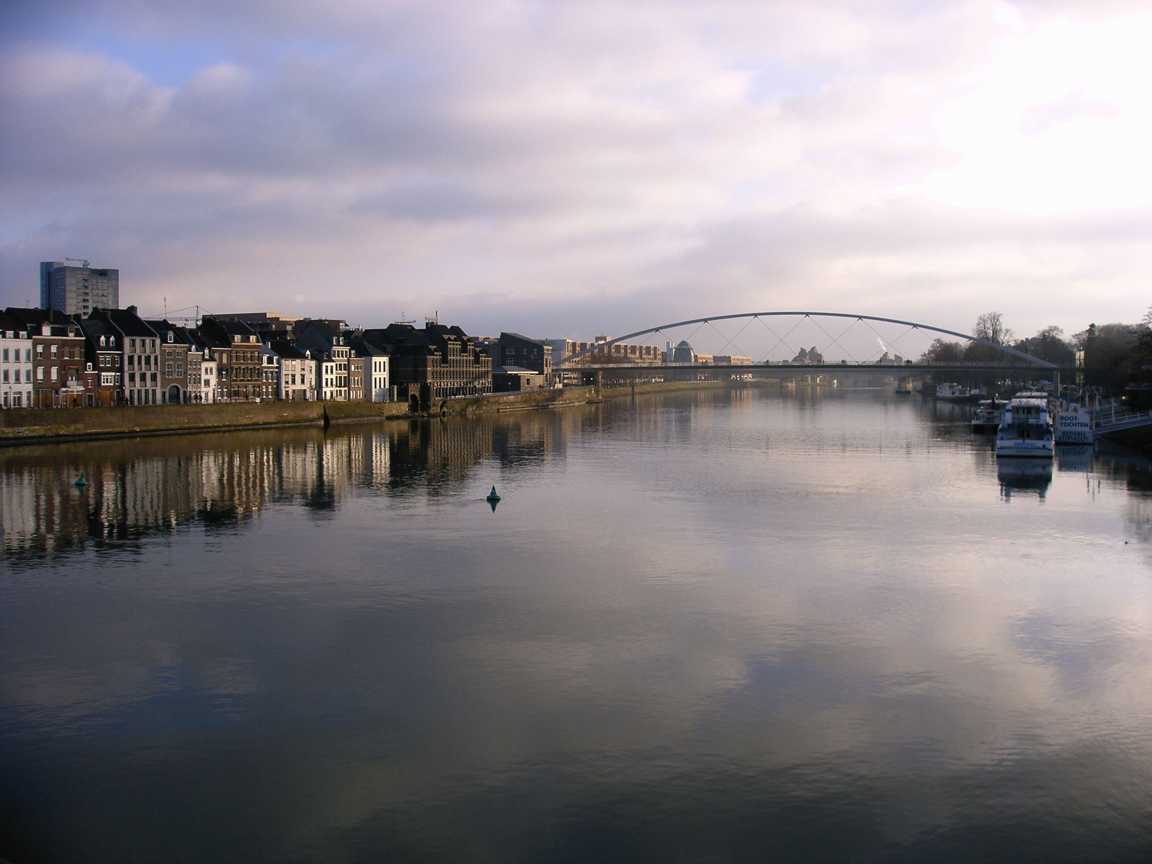
|
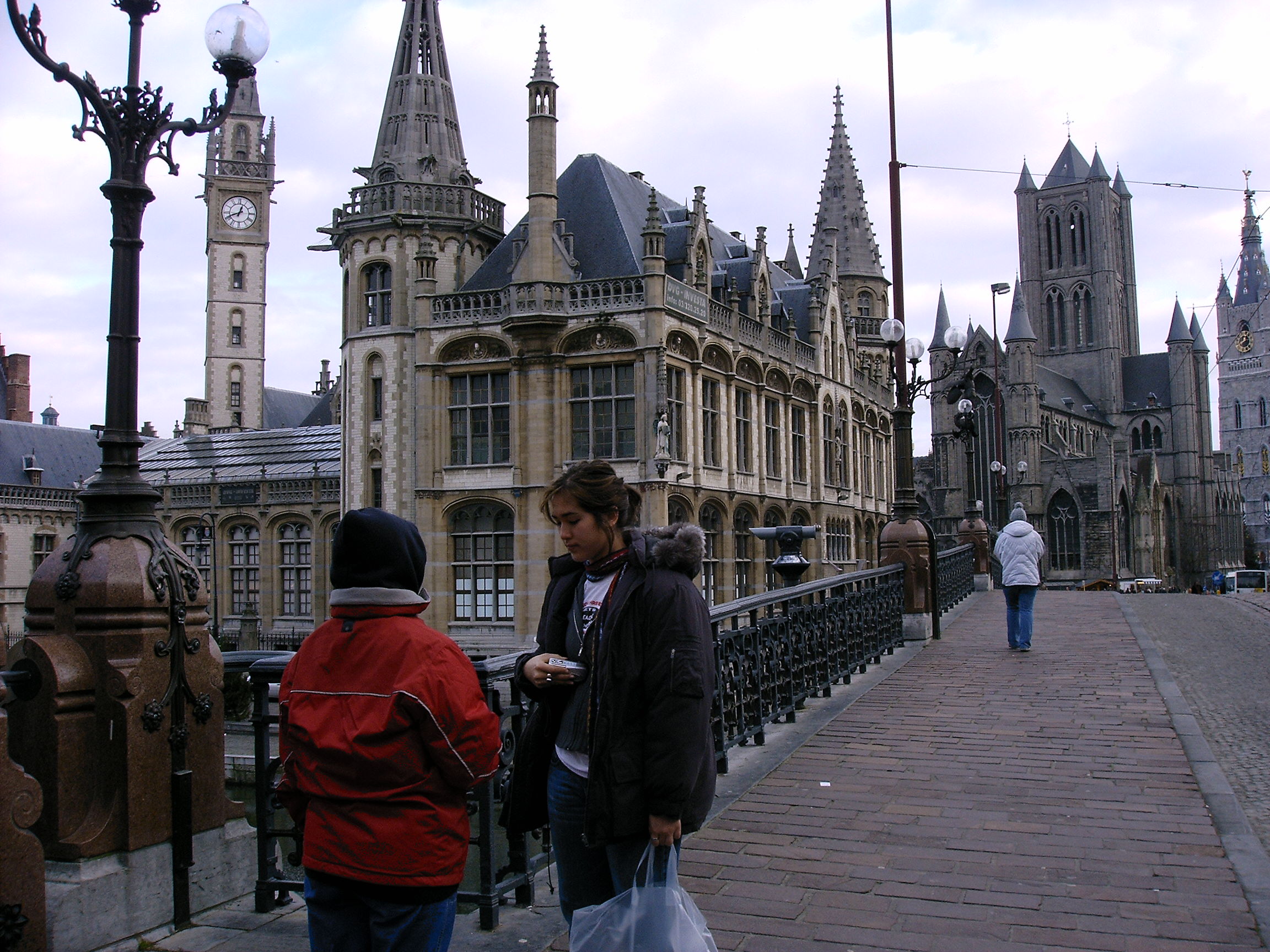
|
The
River Maas, downtown Maastricht
|
And
farther afield: From St. Michael's Bridge, Ghent
|
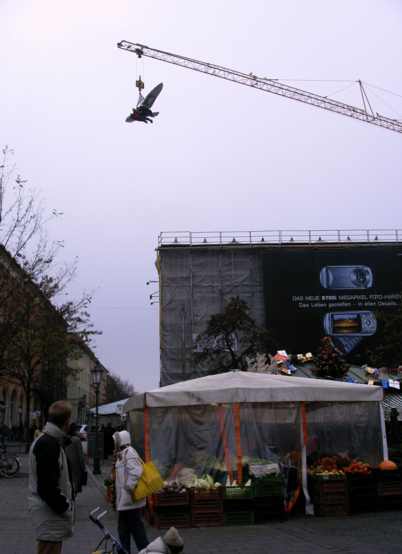
|
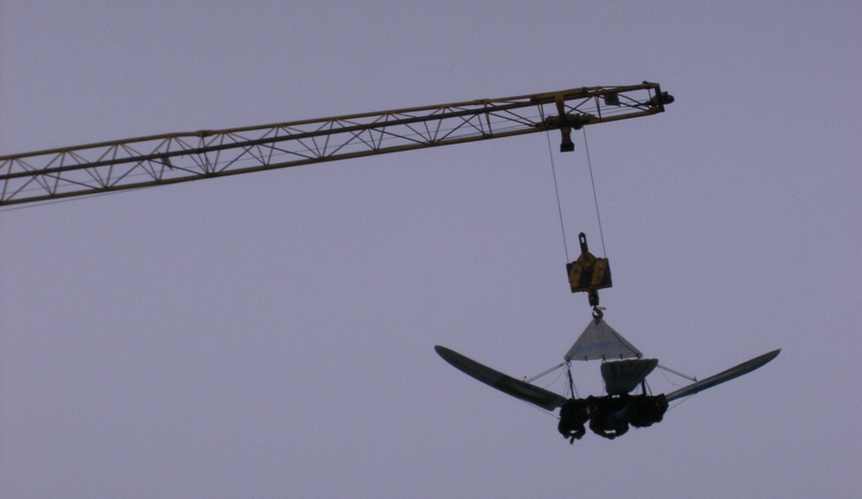
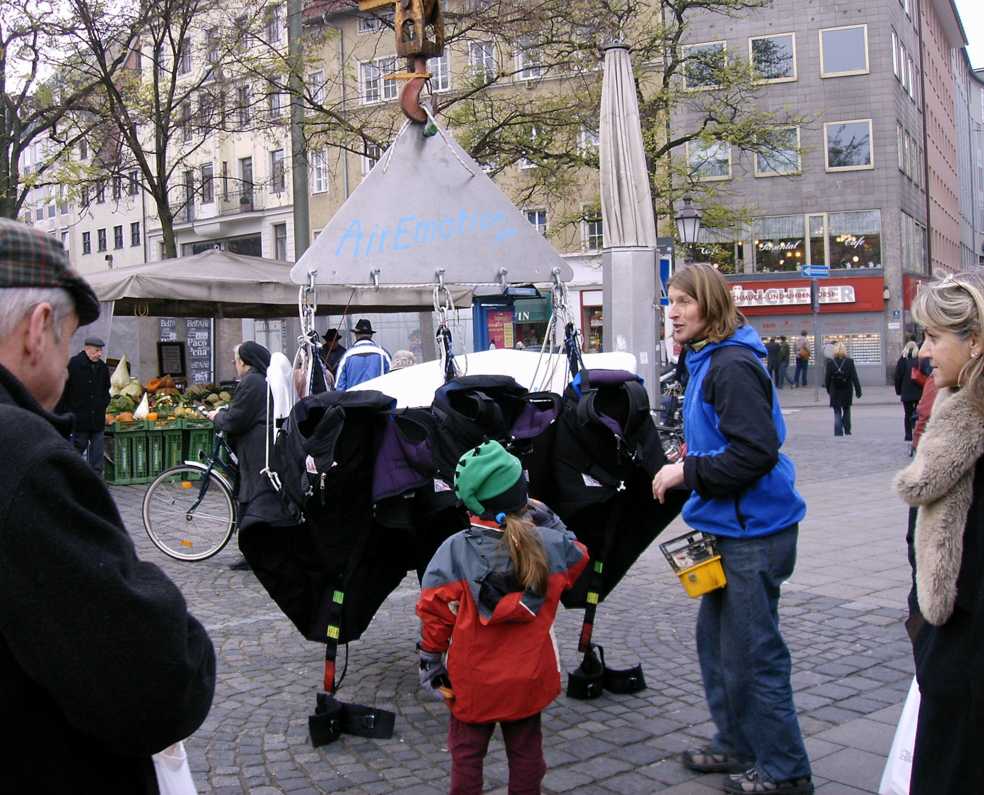
|
Here's
a free idea for you entrepreneurs. Keep the cranes busy...
|
...even on days when there's no
construction going on (Munich)
.
|

|
Nymphenburg Palace grounds, Munich
|
November 25, 2004
A site to enjoy
Gina writes that she couldn't spend too much time at this site http://www.tuscany-apartments.com/s146/,
for
fear that her drool would damage the keyboard.
We will now stretch the geography of
"Euroblog"...
I didn’t run into Colin Powell
|
Because he was in Sharm el-Sheikh this week and I was in
Cairo. Was fun to preside over the graduation of 50 MBA, M.Phil.,
and DBA students from our program here, and celebrate 10 years of our
local partnership with the Regional IT Institute, which recruits the
students and runs the logistics. We’re believed to be the largest
MBA program in Egypt (and the most expensive) as well as the oldest
international MBA program in the country. For this reason, a lot
of ambassadors, cabinet ministers and suchlike dignitaries were present
– preferring to party with us, perhaps, than attend what must have been
a tense meeting with Powell.
The two DBA grads were our first in Egypt, both women, and it
was
nice to see that local enthusiasm and support for their achievement was
universal among men and women alike.
I’ll put some excerpts from my commencement address below.
I’m staying at the Marriott here, the largest hotel in the
middle
east (they claim), a small city in itself. Its core is the
1860s-era El Gezirah Palace, fabulous interior touches. RITI is
also in a palace formerly owned by a royal family member, a small
palace to be sure, but amazing architecture. (From material in
earlier installments of this blog, you might think I know something
about architecture. I don’t. I just know what I like, and I
also
have a thoroughly mercantile, uncultured appreciation of buildings as
growth infrastructure.)
They spend a bundle here to preserve 4,000-year-old
antiquities, but
buildings (square miles of ‘em) of the Belle Epoque haven’t seen a lick
of maintenance in their 100+ years. Like those in Havana, they’re
in danger of being lost, but UNESCO is starting to fund some
restoration.
|

|
Didn’t know we were that famous
So there I was in the Cairo Marriott, talking with some of the folks
who had come to see the commencement. “Where were you before
Maastricht?” one asked.
I replied, “Oregon Graduate Institute.”
“Oh, OGI,” she said, “I heard half the computer science department
moved downtown to Portland State.”
Turns out she’s a CS professor at U. of Illinois. Word does
seem to get around.
That reminds me (if you’ll bear with me) of my favorite P.R.
joke. The monkey and the lion didn’t like each other. One
day, the monkey enters a clearing in the jungle, to find the lion
kneeling to drink from the pond. With the lion’s derriere
directly in front of him, the monkey sees the chance of a
lifetime. He kicks the lion right in the buttocks, and the lion
falls into the pond. The monkey runs off through the jungle; the
lion pulls himself out of the water and gives chase. Finding a
vacant hunters’ encampment, the winded monkey dons a pith helmet, sits
on a camp chair, and hides behind a newspaper. The lion bursts
into the camp, and asks, “Have you seen a monkey run through here?”
“You mean the monkey who kicked the lion in the butt by the pond?”
the monkey replies, continuing to hide his face.
The lion moans, “Oh, geez, it’s in the papers already?”
And get her to fund Portland startups?
Another member of the group was a British professor of
diplomacy. On this anniversary of JFK’s death, he said, his
colleagues had been speculating on how the world would be different if
it had been Krushchev who had been shot instead. Only one thing,
they concluded, was certain: Onassis would never have married Mrs.
Krushchev.
We looked at him like, very amusing, but why are you telling us this?
He said, “Now, who will marry Mrs. Arafat!”
Impressions
The Egyptians are hospitable and good-humored. The first thing
many of them want to tell me about is the bureaucratic hells they’ve
gone through trying to get visas to the US, getting through immigration
once they do fly to America, or being deported due to some computer
screwup. Though many have enjoyed visiting American sights and
family in the past, they’re just giving up on US travel now.
Racial, gender and religious tolerance look exemplary, from my
limited set of observations. The woman valedictorian quoted a
Jewish scientist, fellow by the name of Einstein. A RITI staffer
could not understand why forms in the US ask for “race.” Her
colleagues are aware that other mid-east nations have little regard for
the talents of women and certain ethnicities. The Egyptians call
the people of those countries “jerks” in this regard.
They are well-informed about world cultures. When they asked
me how many wives I have, they were teasing me, I think.
Shopping is a bargain here. Food is cheap and fairly
interesting, though meats tend to be tough.
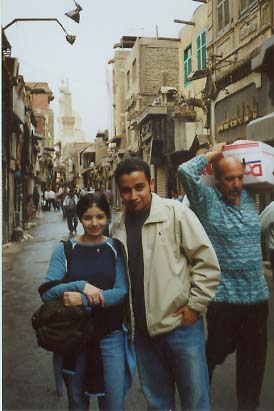 My good guides My good guides
|
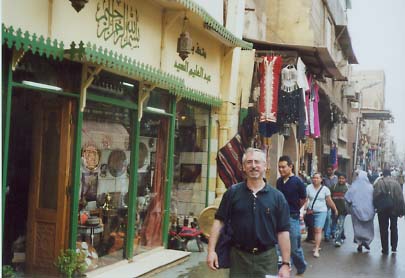
Bazaar at Khan el Halili
|

|

At Giza with RITI driver Mohamed
|
The Egypt Museum
Did you know the ancients mummified crocodiles and fish too?
The museum’s 4-foot Nile perch, thousands of years old, looks like it
was dried yesterday and dropped into the dust for a few hours.
The crowded (with people and exhibits) building is in crappy
condition, and labeling of exhibits is haphazard. This means even
the digital tours on CD can’t be very helpful, but it does enhance the
incomes of the personal guides who solicit you at the entrance and
probably make up their narrations out of thin air. Pardon my
skepticism, but if you want to learn about ancient Egypt, you’ll do
better at the University of Pennsylvania’s Egyptian Museum in
Philadelphia.
Here, therefore, one can only appreciate the overwhelming volume of
antiquities (on and on and on - 100,000 items on display) and their
artistic quality. As for the latter, no one can use the phrase “for the
era”; it would be great art in any age. As a devotee of Tewa
pottery, I have to note one exception: when it comes to handmade red
& black pottery, you will find much better stuff, better both in
workmanship and artistic merit, in New Mexico. The Egyptians’ use of
turquoise in decoration and jewelry makes the comparison to the US
Southwest even more obvious.
Nice to see dozens of kids sitting on the museum floor, sketching on
big pads, boys and girls intermixed, about half the girls in head
scarves.
The museum made me wonder, how can one choose projects (in this
lifetime, natch) that will be of interest and use to future
generations? The ridiculous self-aggrandizement of the Pharoahs,
embodied in their tomb-building, ironically led to the preservation of
all this great art. (Did the artists suspect as much?) Our modern
curiosity about how the pyramids were built, now answered via the
discovery of incidental documents that show the construction
technologies and financial details, was unanticipated by the
ancients. Their preoccupation with where the world and the soul
come from and where they go seems universal, but other things they seem
to have cared about are totally outside the range of what we now
consider important. Or so I infer from artifacts that must have
been infused with meaning for them but are simply decorative today.
A colleague points out that we still don’t know the project
management methods of the pyramid builders. Unlike the European
cathedrals, whose construction continued for generations, an Egyptian
tomb had to be started when a king assumed the throne, and completed by
the date of his death. Unless they fudged the start or end dates
somehow, the builders had a hell of a project management
challenge. Completing one major pyramid of 2.3 million stone
blocks within 30 years would require precisely placing one of the
2.5-ton blocks about every five minutes.
Rodenbeck (see "Re-globalization, below) says that challenge
produced a bureaucracy that kept Egypt's technological civilization
going for millennia. Our modern macroengineering challenge, the
space program, has produced a NASA bureaucracy that is stultifying and
costly - as Egypt's must have been also - but if we're patient, maybe
the results will be similar.
Re-globalization
In his book Cairo: The City
Victorious, Max Rodenbeck describes the state of globalization
one thousand years ago, with Cairo at its center:
Ties of family and trade linked
[Cairo] to Andalusia and to Samarkand, to Yemen and even across the
Indian Ocean to the Malabar coast and Ceylon. This was a society
where, in 1016, a rabbi in Tunisia could send a letter by public post
to [Cairo] enquiring what to do about the inheritance of a native of
Baghdad who had died, 4,000 miles from home, in Morocco.
The bankers of 11th-century
[Cairo] issued promissory notes and offered loans, as invoices and
deeds from the [period] show…. Traders sold on credit. You could
buy… on installment.
Under the laissez-faire rule of
the Fatimids (969-1171)… [Cairo] became the major emporium of the
Western world, [dealing in] mosquito nets from the Nile delta… silk
from Muslim Spain and Sicily… Armenian carpets… Chinese porcelains…
Koran stands of Indian teak, … Baltic amber, pearls from Muscat and
rubies from Ceylon…. Paper, as yet unknown in Europe, [was] so cheap
that… fruit sellers wrapped their goods in it.
The gold dinars minted in Fatimid
Cairo made their way to the ends of the known world, becoming the
standard currency of the age….
In the barrierless world of
medieval Islam it was easy for foreign Muslims to set up shop in the
Egyptian capital.… Commercial treaties with Ceylon, Venice, Florence
and Genoa followed…
Ironic that I went to teach Egyptians about globalization; they are,
or were, the masters.
Excerpts from the commencement speech
Some of the sentences are due to Ron
Tuninga, Dean of MSM.
As we have seen in world events in the past two years, people
educated in the tradition of Maastricht School of Management are more
necessary than ever before. Culturally sensitive, tolerant and
ethically and socially responsible managers can help build companies
that are responsive to the needs of many stakeholders and
society.
Lest you think that I am simply sharing platitudes on a happy
occasion, I will take a few minutes to paint the picture in starker
terms, and propose an action plan to you.
In 1992, Frances Fukuyama wrote a book called The End of History and the Last Man.
In it, he theorized that while further regional conflicts are probably
inevitable, the globalization of liberal democratic capitalism was “the
final resting point of history.” Now, globalization means that
all parts of the world are connected. I wonder whether Mr.
Fukuyama was aware of something Marshall McLuhan said in 1962:
We shall at once move into a phase
of panic terrors, exactly befitting a small world of tribal drums,
total interdependence, and superimposed coexistence. . . . Terror is
the normal state of any oral [connected] society, for in it, everything
affects everything all the time.
Indeed, today’s unrest is greatest in parts of the world that have
few extra resources to buffer the region against the tight connections
of globalization. Fukuyama understood the complexities of his argument
and the exceptions to it, but in light of the November 11 tragedy, we
must conclude that the main thrust of his thesis was naïve.
Vaclav Havel, the playwright who became the first post-Soviet
president of the Czech Republic, perceives that global technological
civilization, though here to stay, is only a “thin veneer” over an
unchanged human nature, over an “immense variety of cultures, of
peoples, of religious worlds, of historical traditions and historically
formed attitudes.” Havel goes on to note that
even as the veneer of world
civilization expands… ancient traditions are reviving, different
religions and cultures are awakening to new ways of being, seeking new
room to exist… and to be granted a right to life… [and] a political
expression.
At the same time, the Secretary General of the United Nations has
made a plea to the international business community to embrace three
principles that the UN has been pushing for many years: sustainable
development, social development and human rights. At MSM, we have
recognized this responsibility, and have broadened the curriculum to
include corporate social responsibility and the ethical values and
norms which are essential in the global economy of the 21st century.
Ultimately it is on the basis of these norms and values that trust
relationships, which are so essential for business and commerce
activities, will be built. It is also from these values and norms that
international cooperation with our partners like RITI can be further
developed and nurtured.
Vaclav Havel sees this as a central challenge to every part of
today’s world,
to start understanding itself as a
multicultural and multipolar civilization, whose meaning lies not in
undermining the individuality of different spheres of culture… but in
allowing them to be more completely themselves.
This will only be possible, even
conceivable, if we all accept a basic code of mutual co-existence… one
that will enable us to go on living side by side….
Yet such a code won't stand a
chance if it is merely the product of the few who then proceed to force
it on the rest. It must be an expression of the authentic will of
everyone, growing out of… our original spiritual and moral substance,
which [in turn] grew out of the same essential experience of humanity.
McLuhan’s vision implies that terrorist bombers are somehow
inevitable in a connected world – an integral expression of the nature
of this world, rather than an external threat to it. Each of you
is here tonight because you have chosen to tread the path of positive,
constructive action. You will be leaders and teachers, and you
must remind those who look up to you that each day, each of us decides
as individuals whether to be part of the problem or part of the
solution.
Havel asked whether his idea of a new, common creed was “hopelessly
utopian.” As business students, you know that new products – and a new
idea can be considered a new product – penetrate the market because
there are “innovators” and “early adopters.” Thus, we may reply
to Havel, it is utopian to expect everyone to accept a code of mutual
co-existence all at once. At first, and at any stage, some people
will, and some people won’t.
I urge you to be an innovator in seeking the common spirit that will
unite us.
What does that mean? What, specifically, can you do?
This month an American business education magazine offered four
answers to this question. These answers are:
- Social entrepreneurship
- Post-conflict planning studies
- Affirmative inquiry
- Personal relationships
I will freely interpret each of these:
Social entrepreneurship.
The best-known instance of this phenomenon is micro-loan programs,
which provide both an ROI for the investor and sustenance for the
needy. Even beyond those worthy results, however, these programs
show young people that there are paths out of poverty that do not
involve the taking up of arms.
Post-conflict planning studies. These
efforts allow participants to form a positive vision in which their
regional conflict is not unending, and in which desirable things will
happen after the coming of the peace.
Affirmative inquiry. Guided
discussion that focuses on the positive changes that can be made,
rather than on blame and the negative aspects of current
realities. Affirmative inquiry also involves building a classroom
environment in which world political conflicts are not assumed to be
“ongoing,” and in which students feel empowered to ask, “How can I make
a difference?”
Personal relationships.
Classroom projects, summer institutes, and entire new schools are built
around joint efforts of students from both sides of a conflict.
Worthy social entrepreneurship projects are often the result.
I will add that at MSM, we insist on mutual courtesy and respect
among all the ethnicities represented at our school. This is not
because we naively believe that commerce and trade are the common
factors that will create peace in the world. Rather, we believe
along with Vaclav Havel that displaying respect in this way is simply
right - a central part of the code of co-existence that will allow us
to survive and thrive.
I’ve heard of crowded planes, but this is ridiculous
On my Alitalia flight, the back of the seat tray advised, “Mantenete
la cintura allacciata quando siete seduti.” If my Italian doesn’t
fail me (and it always does), that means, “Keep reallocating the
seatbelt when seven people are sitting here.”
Changed planes at Milano Malpensa (“badly thought-out”), actually a
very beautiful airport, totally elegant.
Back in Maastricht
I got back in time for a small expatriates’ Thanksgiving party.
Which makes me think about weight. Participating in aikido classes in
Maastricht is more exercise than teaching them in Portland, so I’ve
lost weight.
"After two months of biking and walking in your beautiful city," I
told the shoemaker, "this doesn't fit me any more." He punched
two more holes in my leather belt. When I reached for my wallet,
he said, "It's on me. Enjoy Maastricht."
I like my new body, but what pisses me off is, before leaving
Portland, I gave away some good suits that didn't fit me any
more. Now they would probably fit :<( And the two
new ones from the Meier & Frank sale are too big.
On the other hand, I can drink more of this good European beer
without worrying about the waistline.
Erratum to last installment:
Or perhaps ‘eroticum’: How could I have forgotten to mention that
we had dinner with two ladies of the evening in Amsterdam?
Remember the Mexican restaurant? Tables are elbow-to-elbow, and
Hyon and I were seated next to two very pretty young women who were
chatting in a mix of English and Dutch. Hyon was first to catch the
drift of their conversation: One was trying to persuade the other to go
to the U.S. for a while, because ‘you can make a lot of money [in the
trade] very quickly.’
top
of page
1st
installment of euroblog
November 7, 2004
Amsterdam
Went to an expats' fair in Amsterdam a couple of weeks ago. It's
a fun town - picturesque, but due to rain this was my only good pic of
the day (some of you have seen it already):
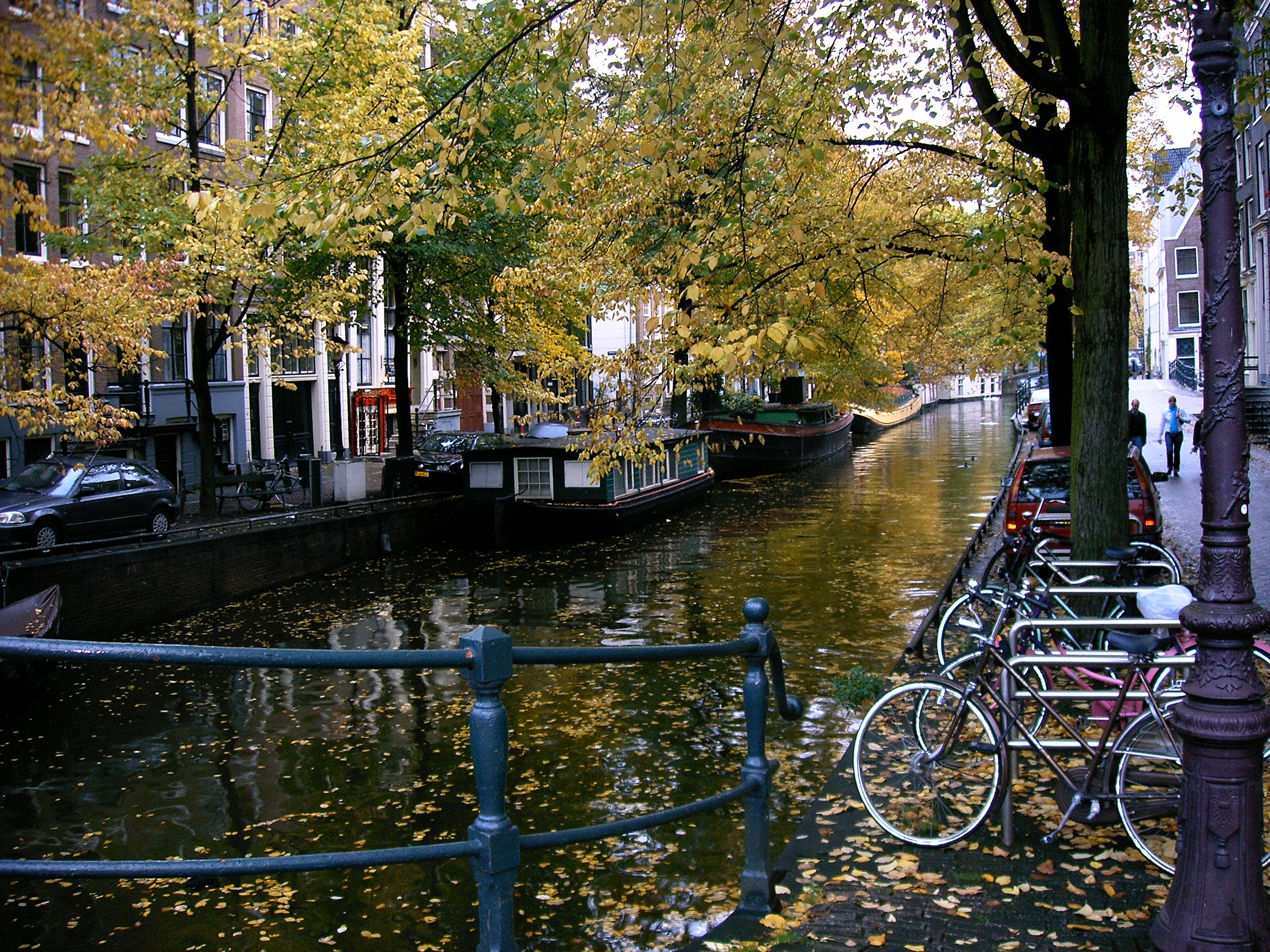
Also fulfilled a sort of life's ambition that day, seeing the
Rembrandts, Franz Halses, etc. at the Rijksmuseum.
Got into a conversation with some locals at a bus stop. Somehow
it turned (the conversation, not the bus) to Mexican food. "There's a
Mexican restaurant at the next stop," they told us, "but it's for
tourists. The one at Nieuw Markt is much better." So we
trekked up to Nieuw Markt, to find that the food was Mexican only in
the most approximate way.
(Maastricht is proud of its international restaurants, but none is
Mexican. Hyon is convinced there's a fortune waiting for the
entrepreneur who opens a cantina here.)
Next time up in Amsterdam, the Van Gogh museum and Anne Frank's house.
Brussels
I'd been told that Brussels was a boring town, all European Union
bureaucracy. Not true! The old market square is a
jaw-dropping wonder. Herewith some photos from our day trip last
weekend:
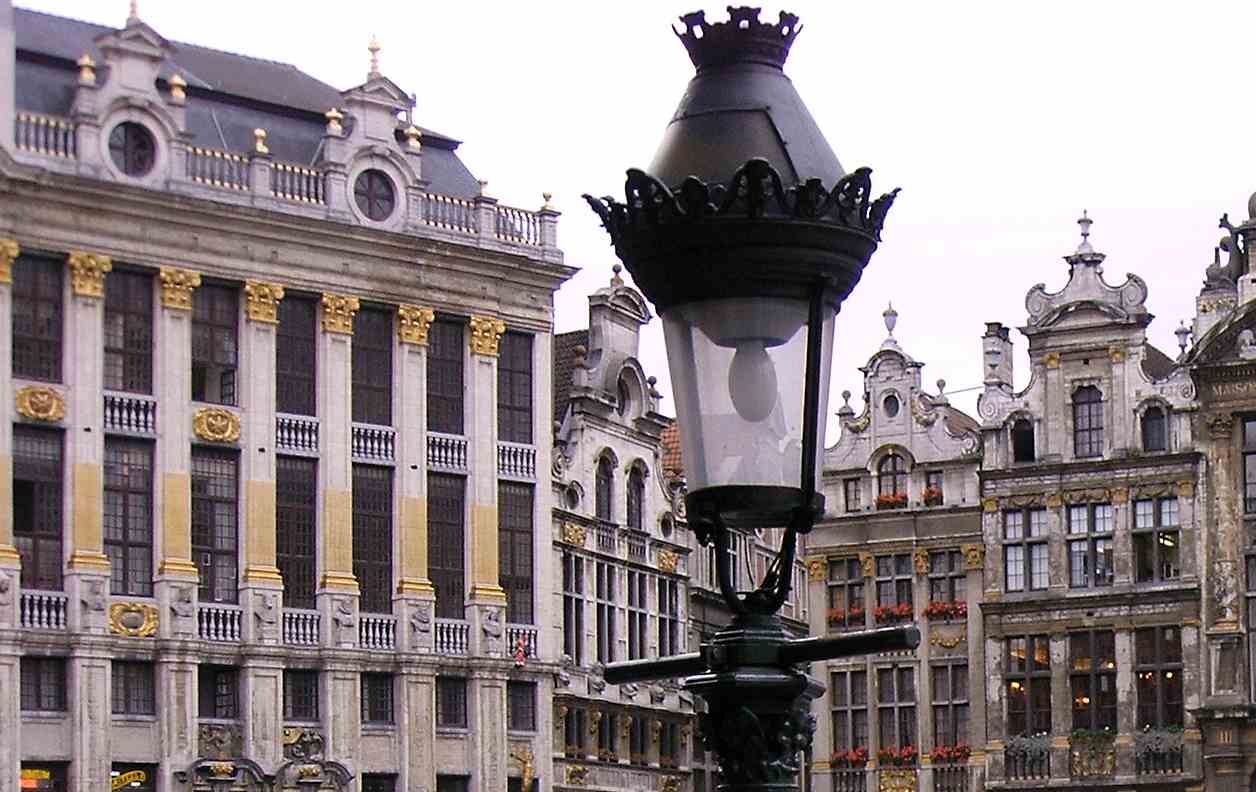
|
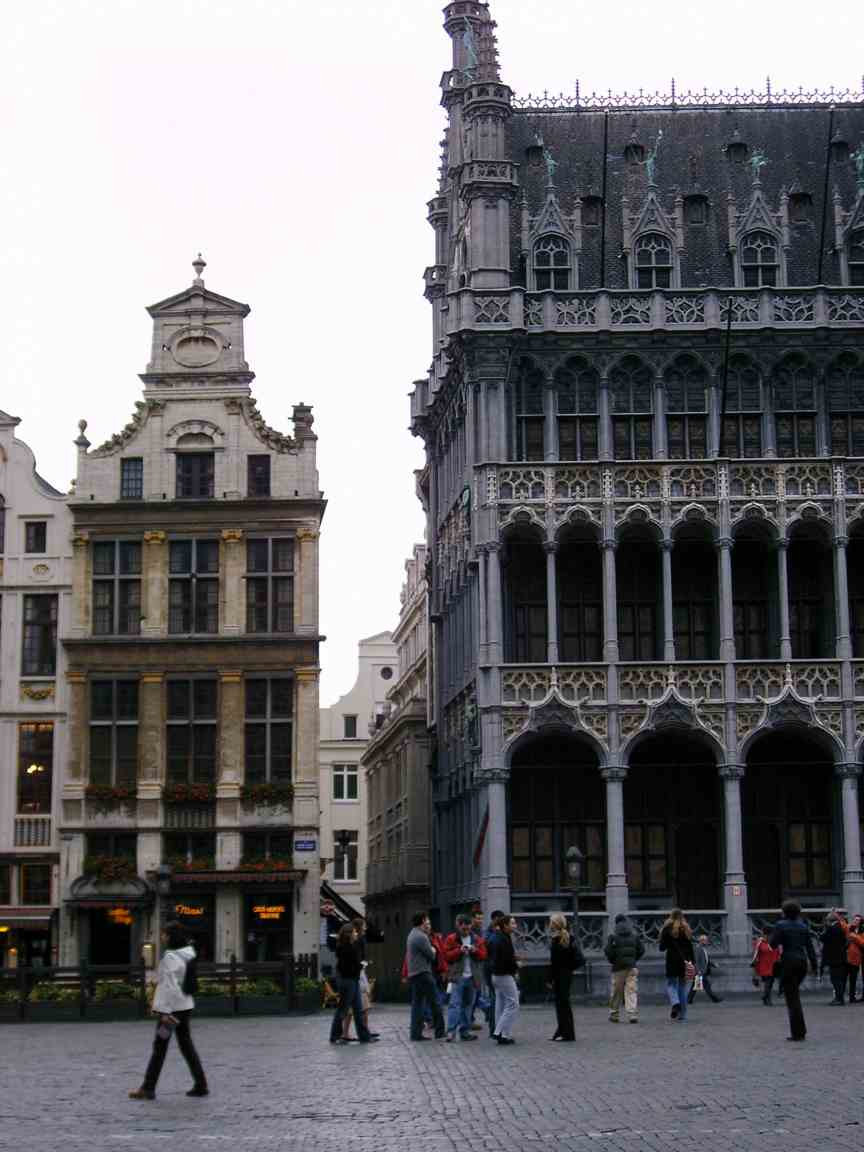
|
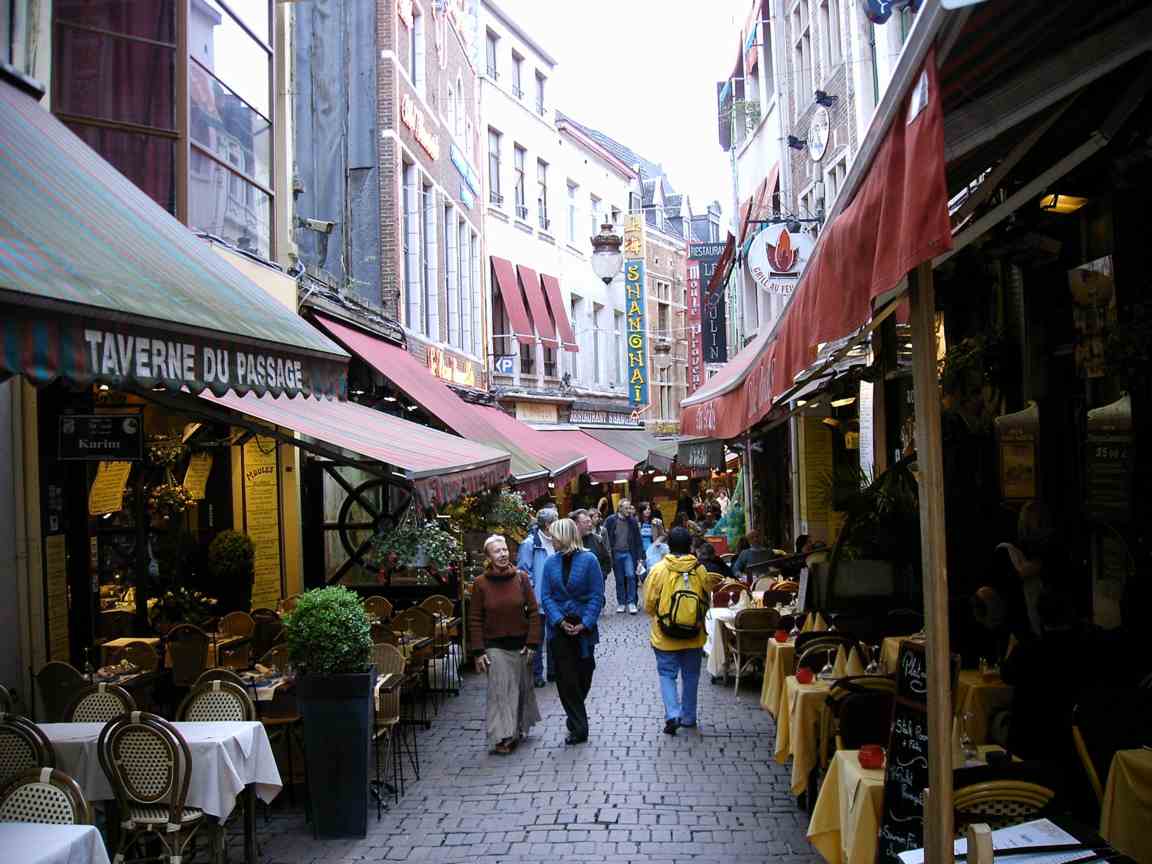
|
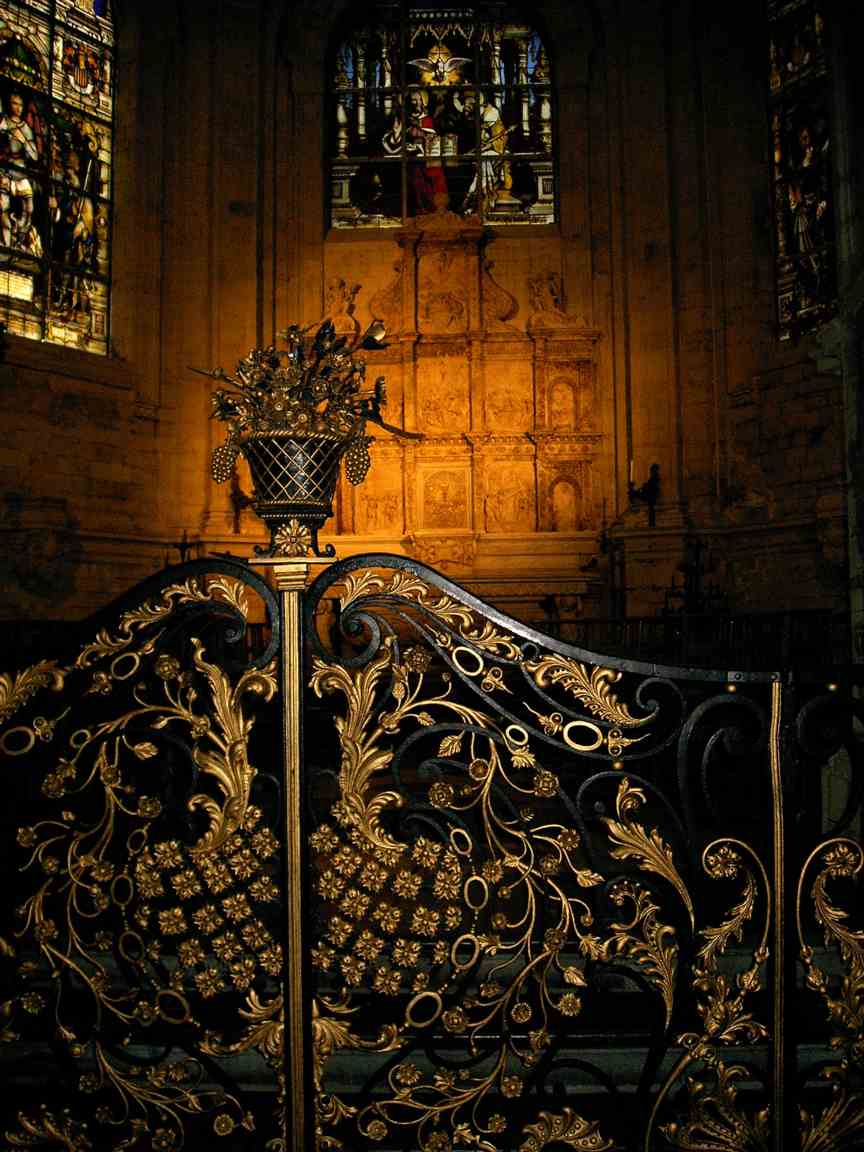
|

|
[As
background for what's to come, I'll mention a day in Maastricht
when someone zooming past Hyon on a bicycle (and evidently not able to
recognize a Korean when he sees one, which my daughter Anna thinks
everyone ought to be able to do) yelled something derogatory about
Chinese people. Hyon was upset. It shook her determination
to find
the bright side of living in Europe. However, a psychologist in
the
aikido group convinced her it was just a guy whose goose had got loose
(as in the US, the Dutch can't institutionalize mentally ill people
without their permission), and that anti-Asian sentiment here is quite
rare.] Now back to the story.
|
Brussels is officially bilingual, French and the local version of Dutch
(they call it Vlaams, we call it Flemish). English is common but
not as much as in the Netherlands. So we're walking down the
restaurant row pictured above, and a guy yells out, "You, yellow
people!" I thought, oh no, here we go again. He continued,
"Have good fish here." You know how your mind races; I now
wondered if this was some kind of backhanded
compliment, like, 'Asians are discriminating about seafood'? He
went on to ask, calmly and conversationally, "You eat yet?" I
then realized both Hyon and I were wearing bright yellow
windbreakers.... A lesson there, I'm sure, about paranoia.
Brussels also has a good comic book museum, but it just made me reflect
how I’d be a wealthy man today if my mother hadn’t thrown out my comic
collection when I left for college. (Sorry for mentioning this,
Mom; you know you're forgiven.) The Elliott Erwitt
retrospective at the Botanique cheered me up; if you’re into black
& white photography, enjoy a visit to the web site, http://www.elliotterwitt.com/.
Post-election remarks
I recommend the Nov. 5 segment of Michael Moore's blog, http://www.michaelmoore.com/
, "17 Reasons Not to Slit Your Wrists." Says it better than I
could; thanks to Jerry White and Beth Gomberg for sending it along.
I'll add that once Saddam was in custody, W seemed to have lost
interest in operations in Iraq. He does not seem, however, to
have let up on his brand of religion that wants to go on
crusade. Part of the backlash that's building is visible here in
Europe, where much attention is given to Arabic and Muslim culture,
with music from Muslim countries featured on the radio, and "Arab
culture nights" in various cities. With Turkey poised to enter
the EU, Europe is sensitive about appearing anti-Muslim, and for this
reason alone, many feel, cannot align with Bush. (This sentiment
is strained in the Netherlands since last week's murder of Dutch
film-maker Theo Van Gogh by a self-proclaimed Muslim extremist.)
Europeans show more impatience with Israel than I would like to
see. I would hate to think, though, that the election was tipped
by Americans who appreciate W as a friend of Israel. Bush's crusade
psychology suggests he is at best a temporary and expedient friend of
Jews and Israel.
Doesn't seem much of a friend of the USA either, if you ask me. I
can readily believe that W is warm, sincere, and friendly in one-on-one
situations. But my university colleagues in Organizational
Behavior teach that the political "frame" is a different behavioral
realm from the personal frame. Ideally, people's behavior in one
frame should not contradict what they do in the other. But
usually people behave differently depending on what frame they
see themselves operating in at the moment; we can't take behavior
in the personal frame as a good predictor of political behavior, nor
vice versa.
European markets and governments acknowledge the uptick in the US stock
market following Bush's election. They are, however, more
reluctant now to hold Eurodollars, never mind buy more of them (by
lending to the US), because they don't believe a second Bush term will
be more financially responsible than the first one in terms of handling
deficit and debt. Look for higher interest rates at home.
Oh, my Aachen back
Benito Mussolini said, "Corporatism and fascism are one and the
same." As businesspeople and business educators, we know a little
bit of corporatism pays the bills. As citizens, we know when
enough of it is enough. What bugged me about this election was
that W doesn't have that sense. (People who rashly compare W to
Hitler are ignorant of history. The true parallels are between W
and Mussolini; this is why I've been urging everyone to go rent Garden of the Finzi-Continis.)
Golly, I'm still on politics, and the heading of this section promised
more travel narrative. Well, today, in the spirit of tolerating a
little bit of corporatism, we borrowed a car and drove to Germany to
shop at WalMart. Geez, talk about Bizarro World - WalMart in
German. As one of the local expats noted, it features a lot of
crap they couldn't even sell in the US. On the other hand,
Germans won't tolerate the 3rd-class baked goods that Portlanders (um,
just for example) eat, so Aachen's Wal-Mart has a spectacular
bakery. Prices on many things (kleenex, batteries) were still
twice as much as in the States, and the selection wasn't really that
great - on balance, we didn't find the bargains we'd hoped to revel in.
Back to Maastricht
Maastricht continues to be an excellent place to live. A bit
small, which can be inconvenient. But a lot of civic pride, and a
lot of people who say, as people do about Austin and Portland, "I've
been all around the world, but I came back to Maastricht to settle down
/ start my business / raise my kids."
We're working hard, too – Hyon is fixing up our apartment and tutoring
in English, and I'm swamped at MSM – we're not just sightseeing and
writing letters. Busy? Yes. But we can do it, because:
We are the Yellow People!
Regards,
Fred
top of page
1st
installment of euroblog























